Kenya 2014 – Day 4: Samburu to Masai Mara
November 21, 2014. (Previous day)
This was our last night in Samburu, so we had agreed to pack up and check out from the camp before our morning drive, and then head straight to the airstrip afterwards instead of returning to the camp first. Unfortunately the clouds had returned this morning, so the light was really not great for photography.
Also, it seems like elephants were once again the order of the day, with large groups of them around, but very little other wildlife in the center of the reserve.
However, as we head towards the airstrip we come across a rather large group of Oryx. We also find a herd of Grévys zebra and some Desert warthogs, but Joshua is concerned about cutting it too close for the flight to Masai Mara, so we don’t get to spend a lot of time photographing.
We get to the Kalama airstrip without any delays, so have ample time to enjoy the packed breakfast the nice staff at Larsens Camp had sent with us. On the way to the airstrip the skies started clearing up, and as we waited for the plane I got a good view of a mountain north of the reserve. When I was here for the first time in 2012 one of the guides who was Samburu told me the locals considered it a sacred mountain, and that the women in the tribes would carry milk and blood to the mountain at the end of the dry season to make sure the spirits gave them a good rain season. Personally, I just think it’s a great looking cliffside 🙂
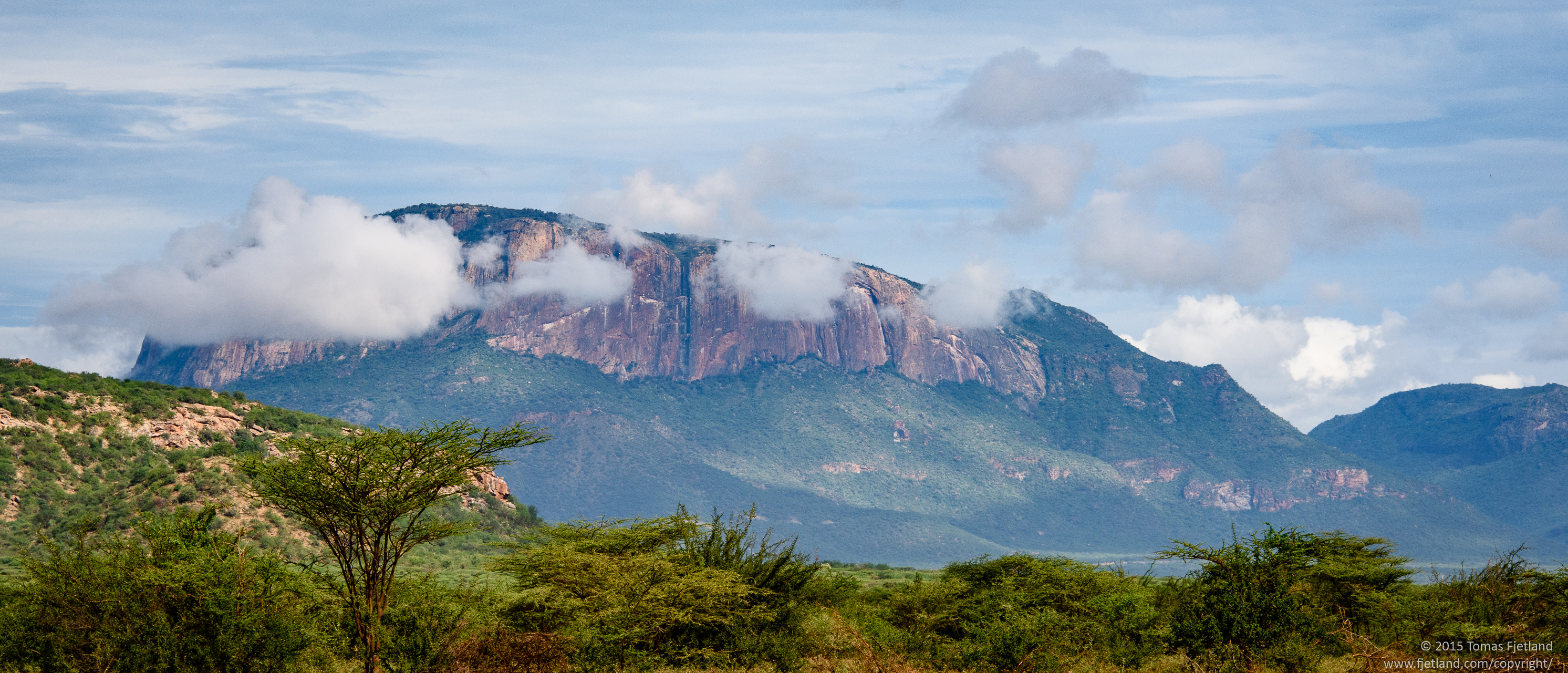
From the Kalama airstrip you can see this mountain to the north. The Samburu in the area considered it sacred
Next to the airstrip you can see this sign/rock. Honestly, I have no idea what it’s trying to tell me. But they do have elephants, I’ll give them that!
At 8:45 the plane from AirKenya arrives, perfectly timed for our 09:00 connection to the Masai Mara. This is why flying between locations in Kenya is so great, with road traffic (and in some areas the roads) you never know what you’ll encounter, but the plane connections usually run like clockwork. Being a strip of dirt in the bush though, you never know what awaits at the actual landing strip. Sometimes the planes need to do a flyover first to scare off any wildlife on the landing strip. In this case there was just a family of Desert warthogs politely watching from the side of the landing strip 🙂
We’re the only passengers on this flight, so there’s no trouble finding good seats 🙂 But once again I regret not remembering to pick up a bottle of water in the back of the plane before finding my seat on AirKenya flights 🙂
As we take off and hear southwest towards Mara, we get a great last view of the part of the reserve we’ve been using. It’s not quite visible, but our camp should be in the middle of the frame or so.
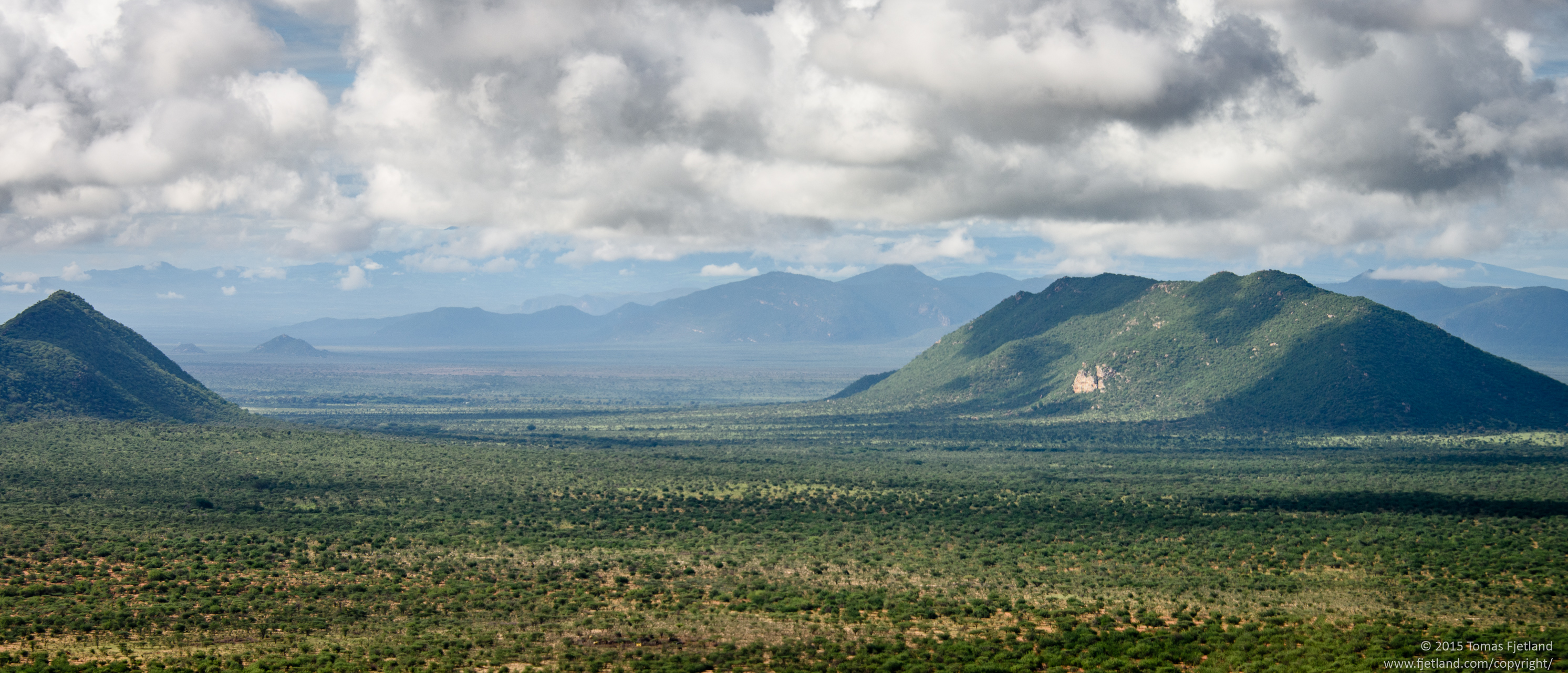
View of the area of Samburu we normally cover on our drives, as seen from the air. Larsens camp and Ewaso N’giro river in the center
The flight takes a little over an hour, and in that time we cross over the rift valley, passing right above Nakuru. The landscape changes dramatically during this trip, and by the time we reach the Masai Mara it’s all mostly flat and green below us.
As far as dirt airstrips are concerned, the one at Ol Kiombo is as professional as it gets, with a souvenir shop, a parking lot and an actual toilet!
A few minutes after arrival the car with our guides from Porini Lion camp arrive. I was really anxious to find out who we would spend the next few days with, as I had requested that we either get “Big” John Siololo, Jared (Gerard? I never quite figured it out), or Jackson Sayialel since I had these as guides on my previous trips and knew they were not only superb guides but also understood our interests as photographers. Our booking agent Sally at Gamewatchers had relayed our wishes to the camp manager, but couldn’t make any promises. It was a great surprise to see that as the Land Cruiser arrived, we had not only got one of our wishes, but two as Big John had Jared with him in the car. It was great to meet both again, we had talked a lot during my two previous trips with Wildphoto.
As we make our way to the Porini Lion camp, I’m reminded why I love this place. John and Jared immediately begin mentioning that there’s lions with a kill that they spotted on the way to the airstrip and that we should check out, as well as a cheetah, and, and…
Just outside the airstrip, we stop for the first photo opportunity. A Grey crested crane, the noble national bird of Uganda, on a nest.
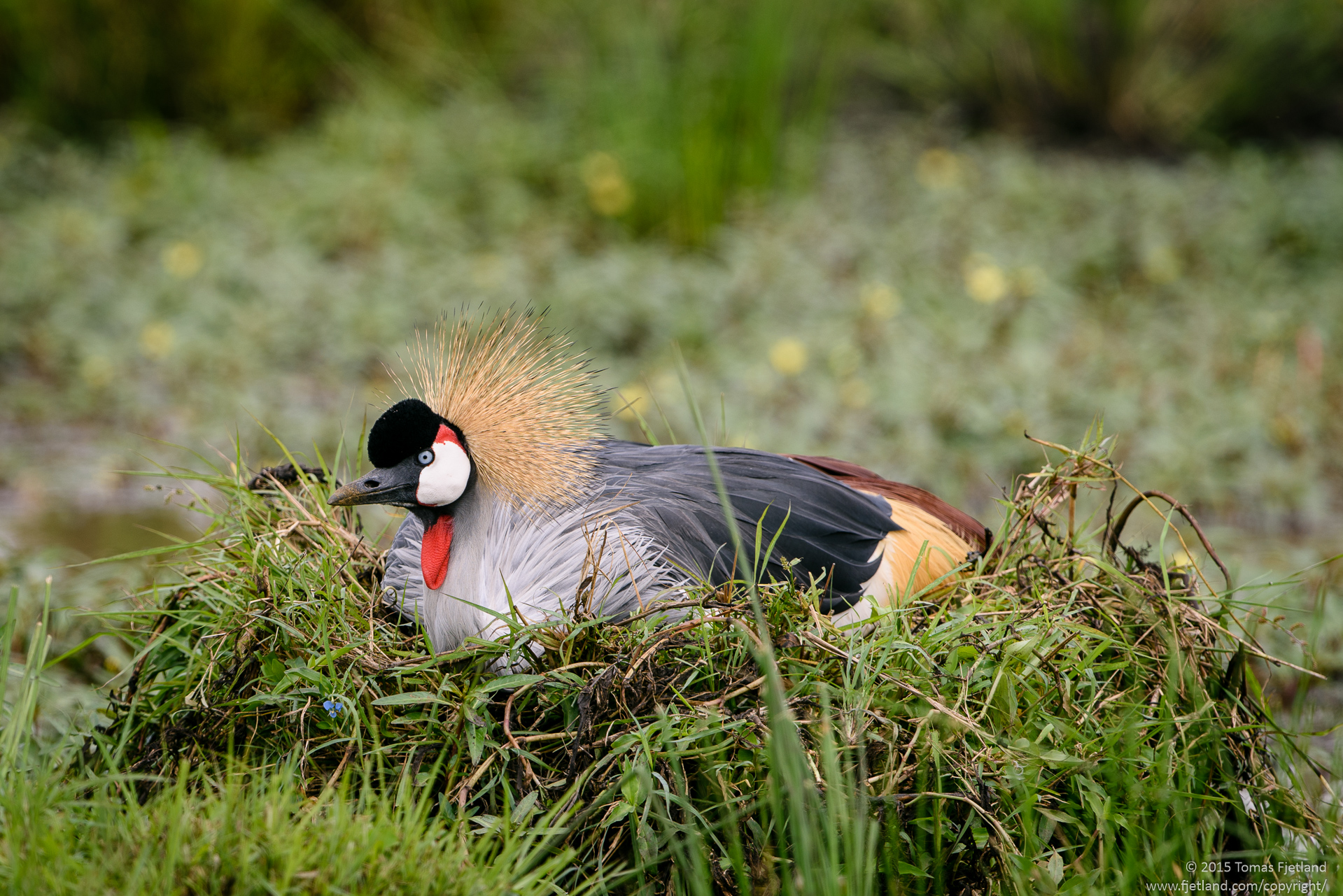
Placed in the middle of a small marsh, this nest sticking up in the middle don’t seem all that safe, but hopefully the Grey crested crane knows what it’s doing
We also come across a group of hyenas, but a couple are radio marked, so I don’t take many shots of them. Shortly after we come across the two lionesses with a full grown Wildebeest kill. They seem to be the only two around, and the fact that they take turns on eating and keeping watch indicate that they are not close to the rest of their pride.
As we move on towards the camp we also find a young giraffe eating from the incredibly thorny Whistling thorn. It’s hard to imagine the skill and adaption that goes into making a living from leaves on such a plant. We also find a cheetah relaxing under a bush. The clock just ticks over 12:00 and high noon doesn’t allow for the most breathtaking shots so we continue to the camp.
In Porini Lion we’re received by the camp manager Jimmy who gives us a quick brief about the aspects of staying in the camp. I had asked for tents in the shade, because from previous experience I knew the tents out in the sun could get very hot in the daytime. So we moved into tents 2 and 3, which are next to some large trees that provided nice shade. One of the youngest leopard cubs in the Olare Motorogi conservacy was born just meters from tent 3 the year before 🙂
After a nice lunch weather is against us again and an aggressive shower catches up with us as we rest. We discuss whether to drop the evening drive but decide to head out anyway. As we get into the car, the rain has subsided to a drizzle and things are lightening up a bit. Just a few hundred meters north of the camp, we find parts of a pride of lions seeking protection from the rain the bushes. At least it provides some cover for the cubs. The adults look pretty wet, and being cats, not very happy at all.
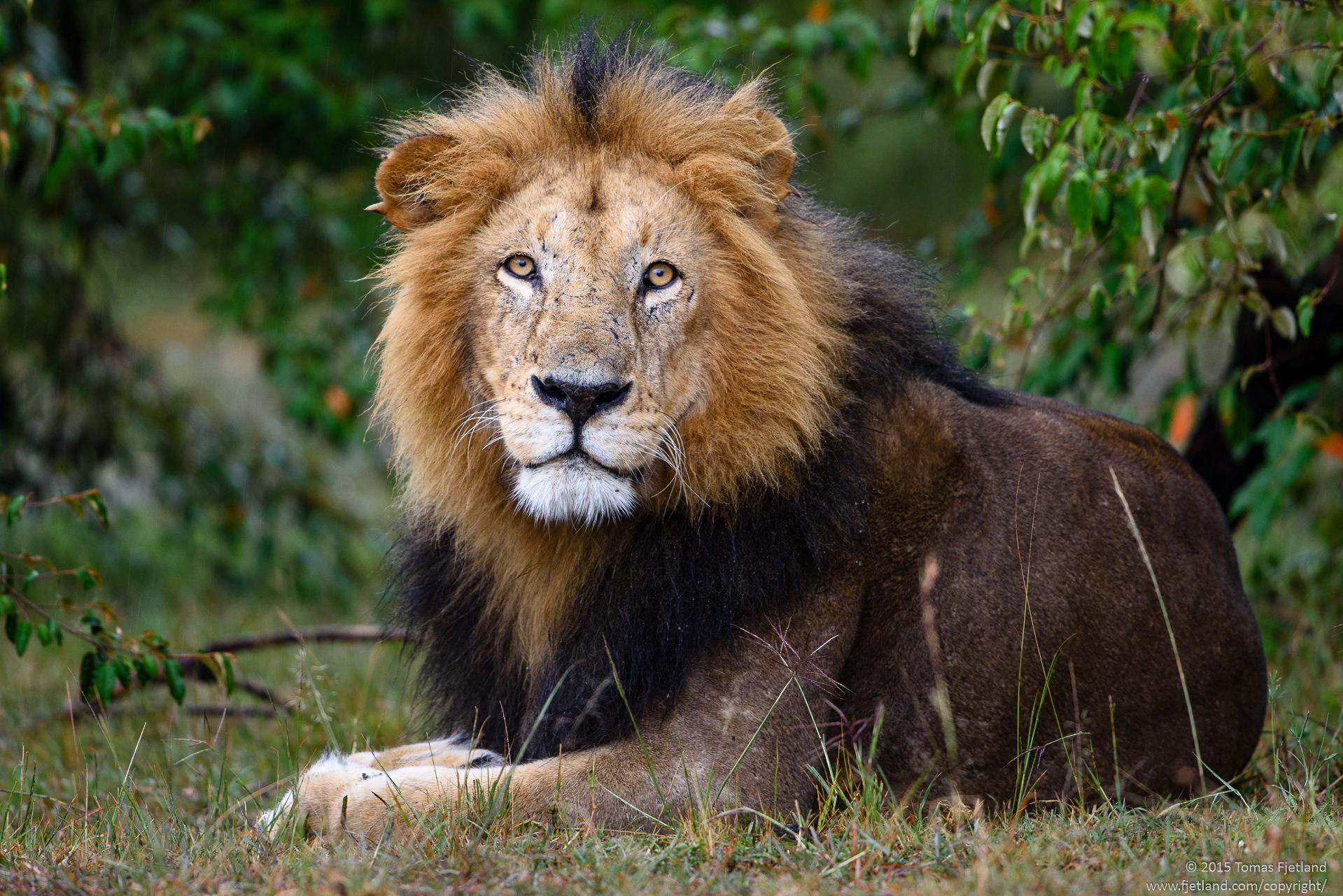
Somehow you rarely find a happy looking cat in the rain. This is also true for this magnificent male lion
After a while we move on northwards, and not many hundred meters away find an old acquaintance of mine – the magnificent leopard Fig. Like the Narasha did for cheetahs, this leopard has given me some of the best photo opportunities for her species on every visit.
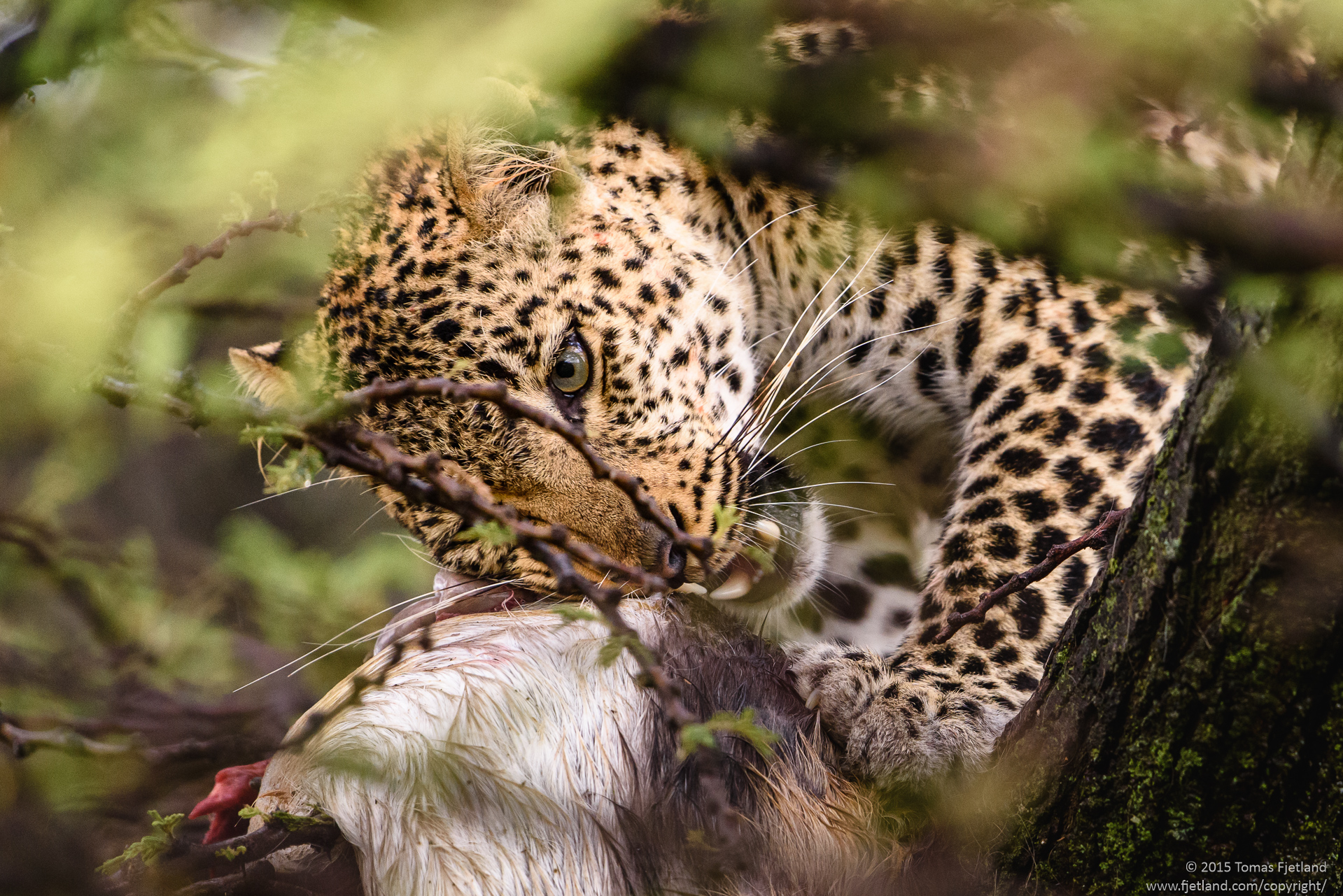
Fig the leopard with a fresh Thomson’s gazelle kill. She had brought it up in a tree next to the Olare Orok river, just north of Porini Lion camp
After some time up in the tree eating innards and smearing crap all over her food, she decides to come down, right next to our car and clean up a bit. Not only is she obviously very wet from the rain, but she’s also been eating all the most disgusting pieces on her catch.
Obviously there’s not a lot of light with the dense rainclouds above us, and as the sun starts to set it gets even darker. We spend the last hour of the day with another group of lions, including a lioness with cubs.
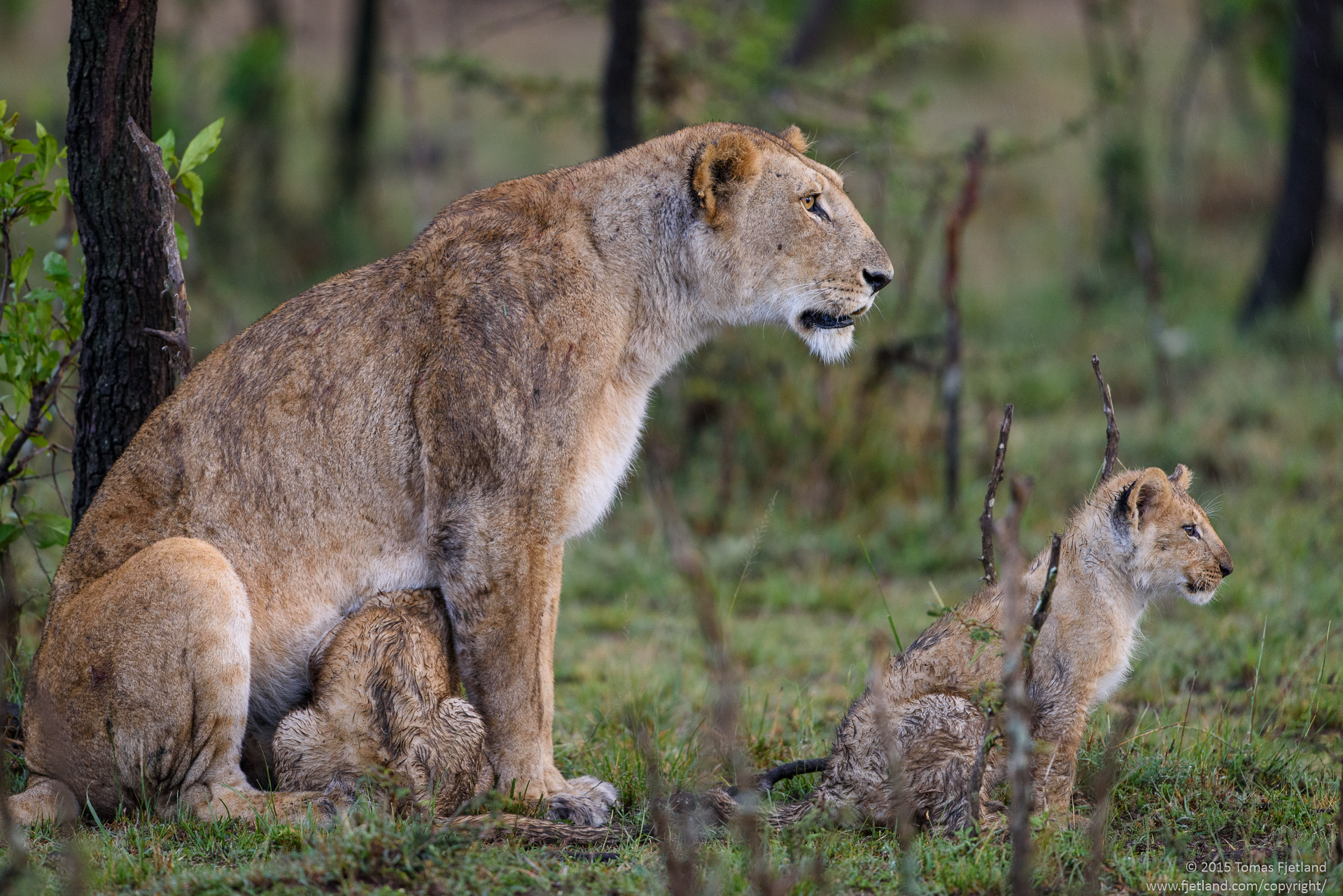
This lioness was less than 50 meters from two males and a couple of other females. With her two cubs with her, she was keeping a close eye on the males
As the sun sets we head back to the camp for dinner and a bucket shower 🙂

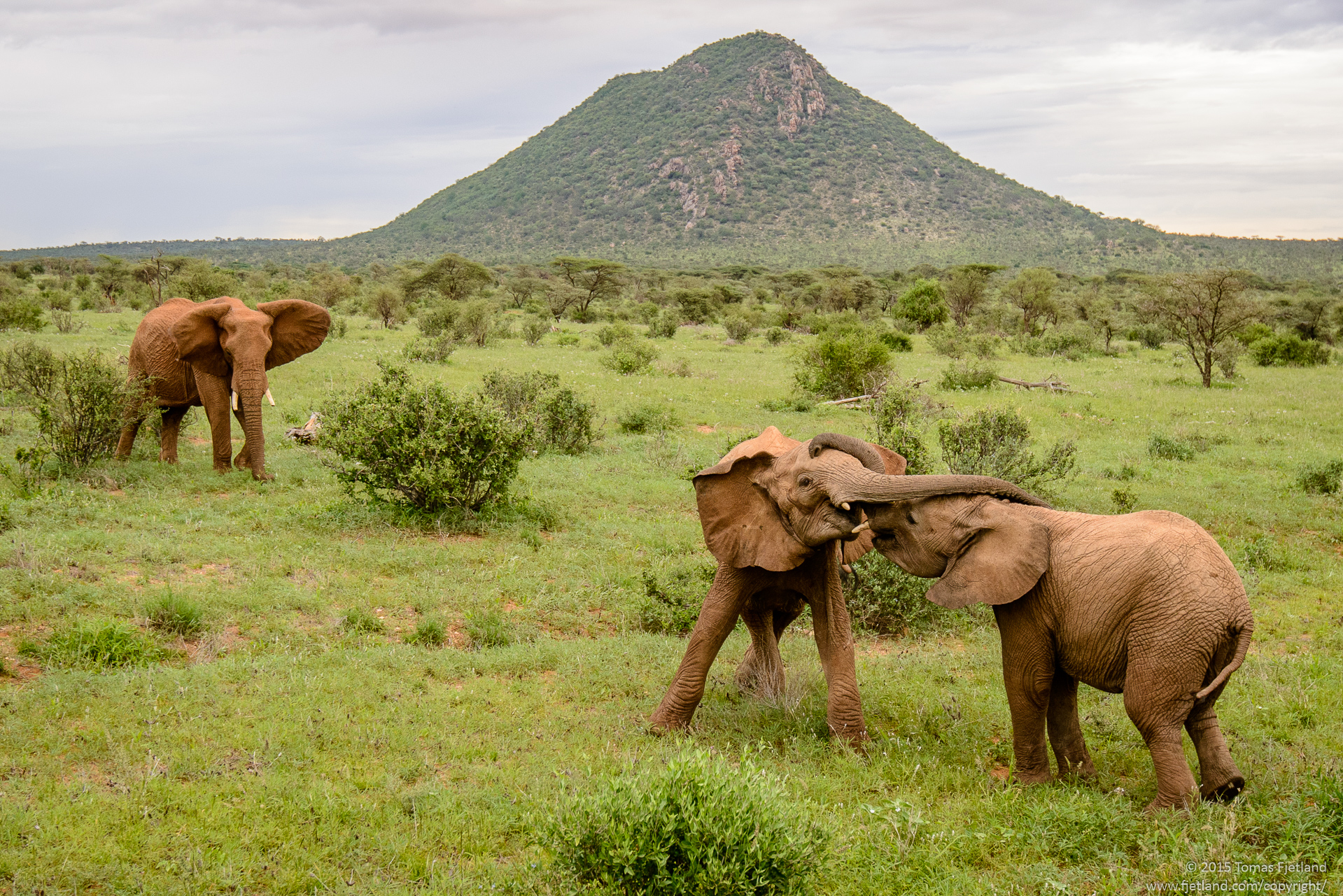
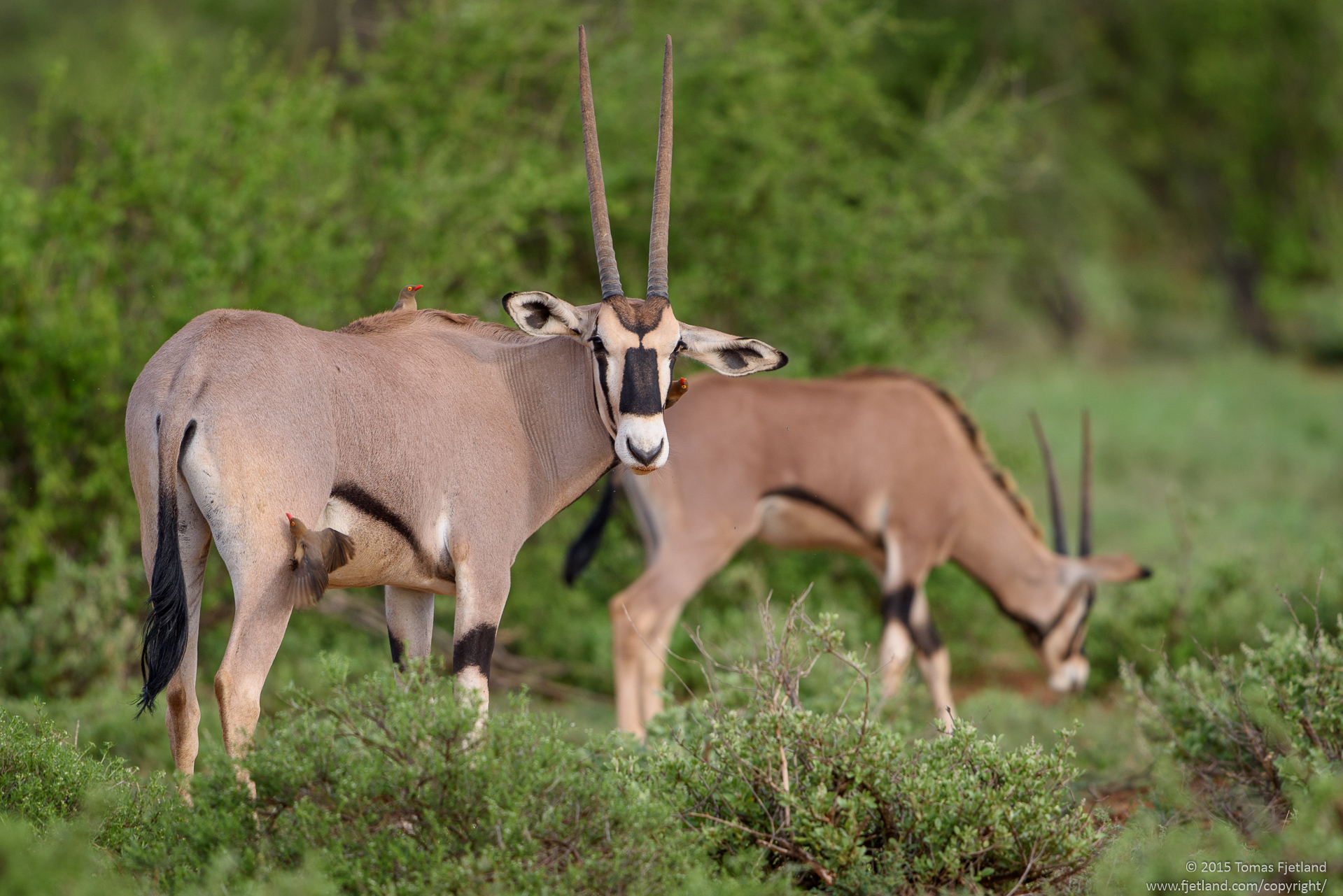
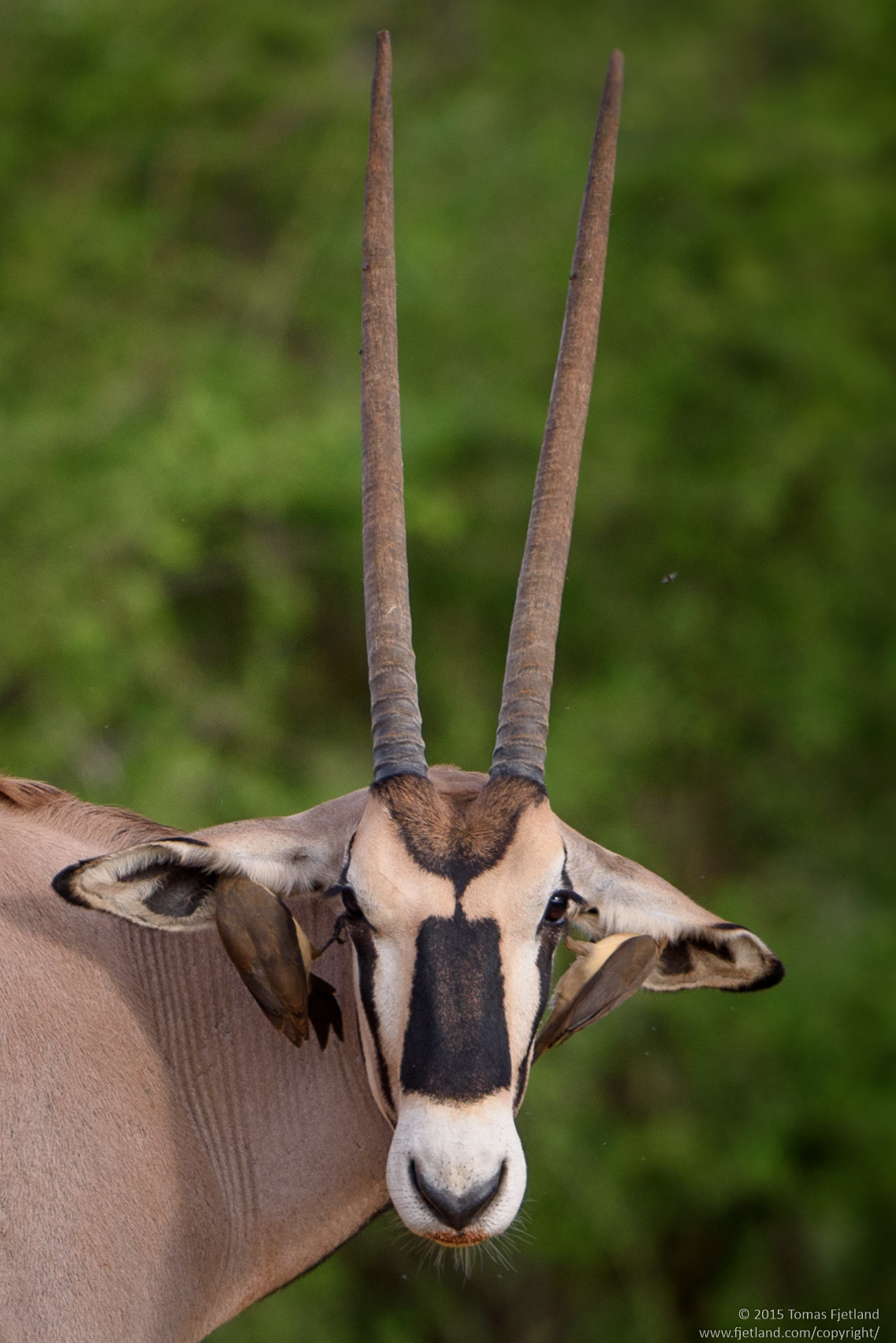
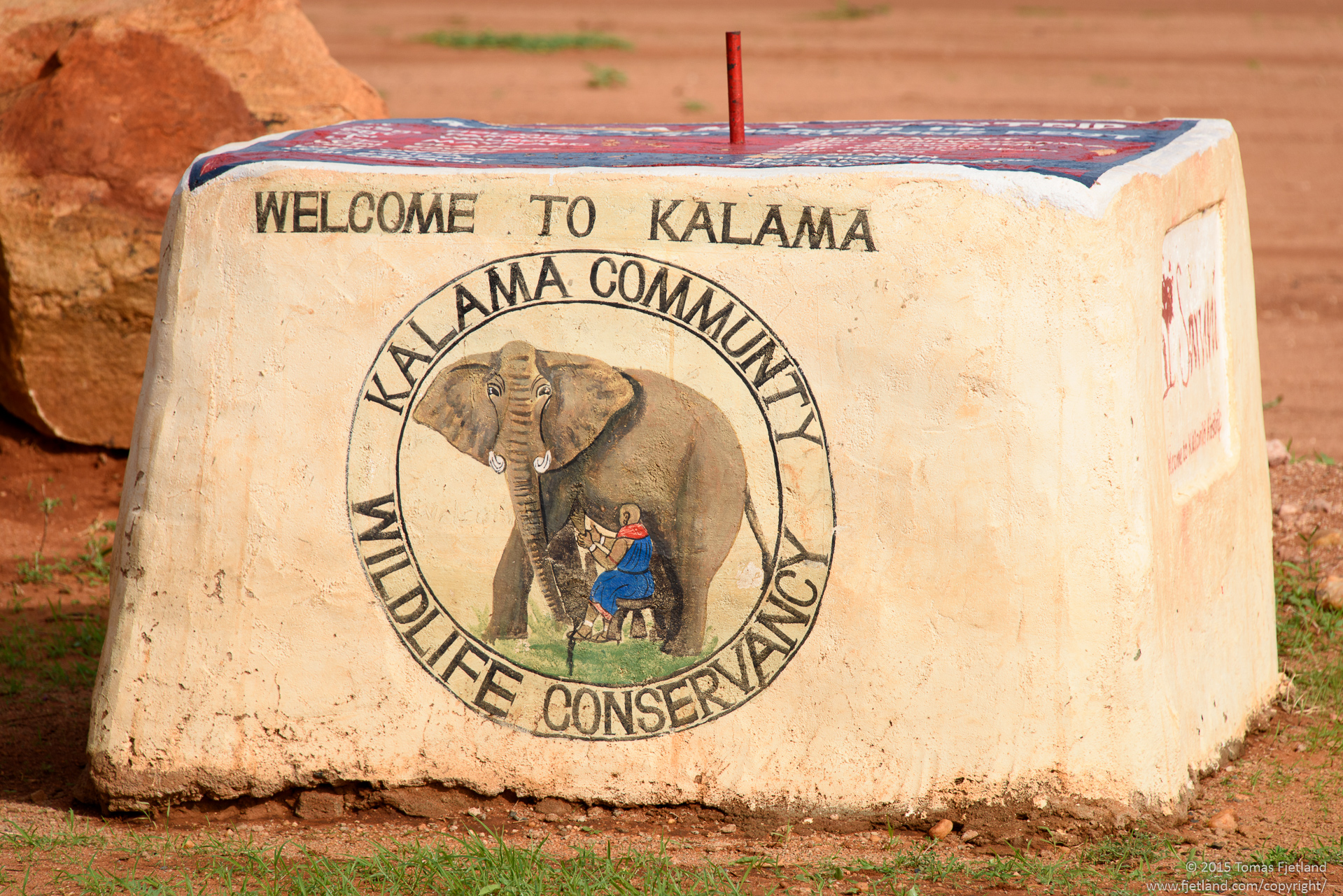

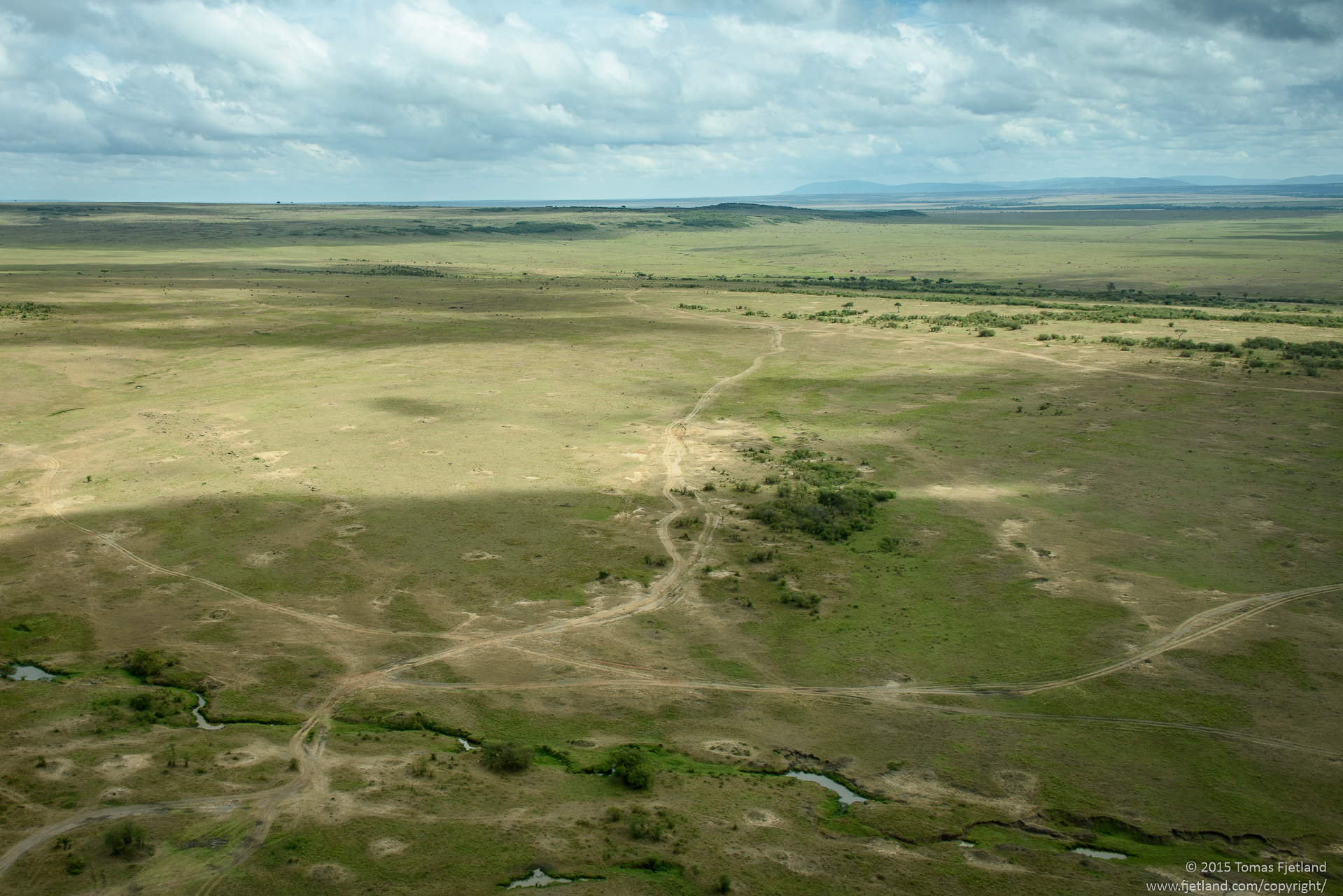


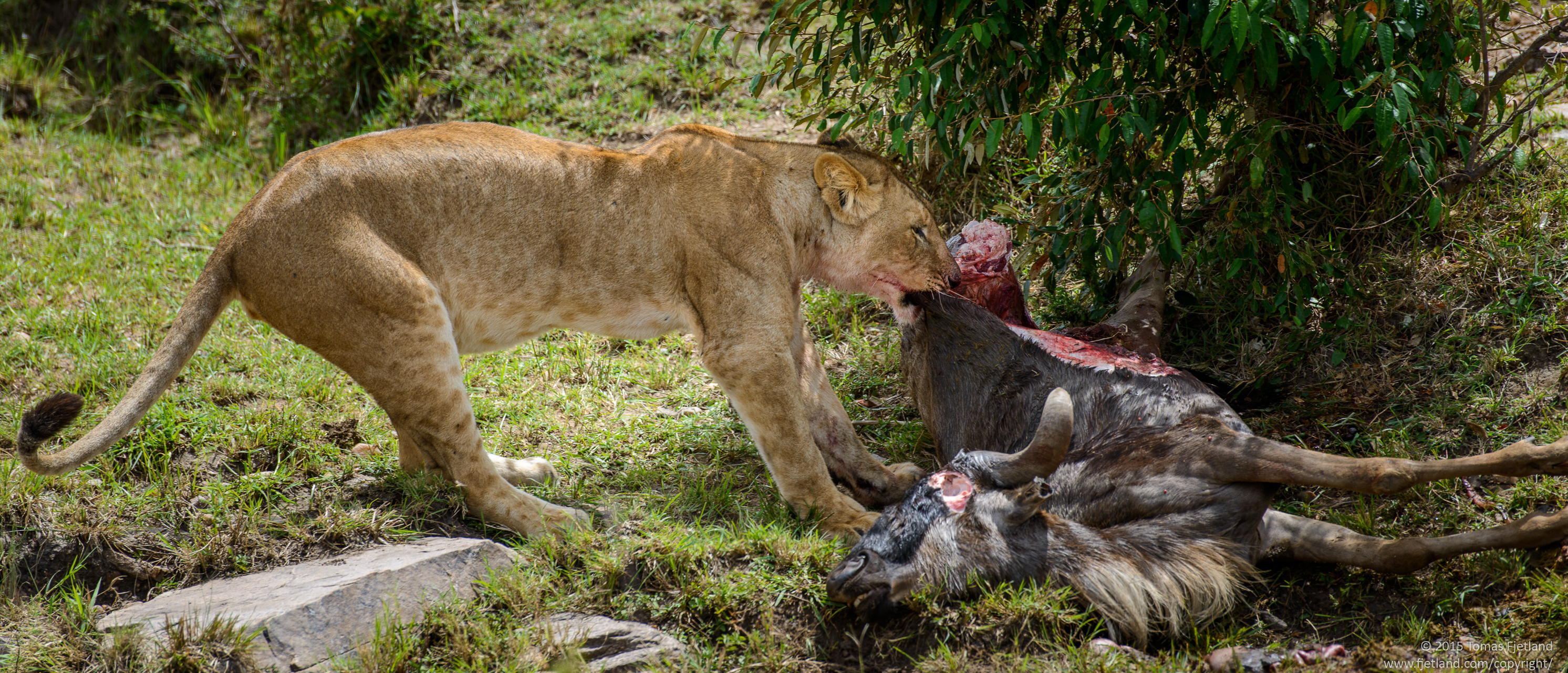
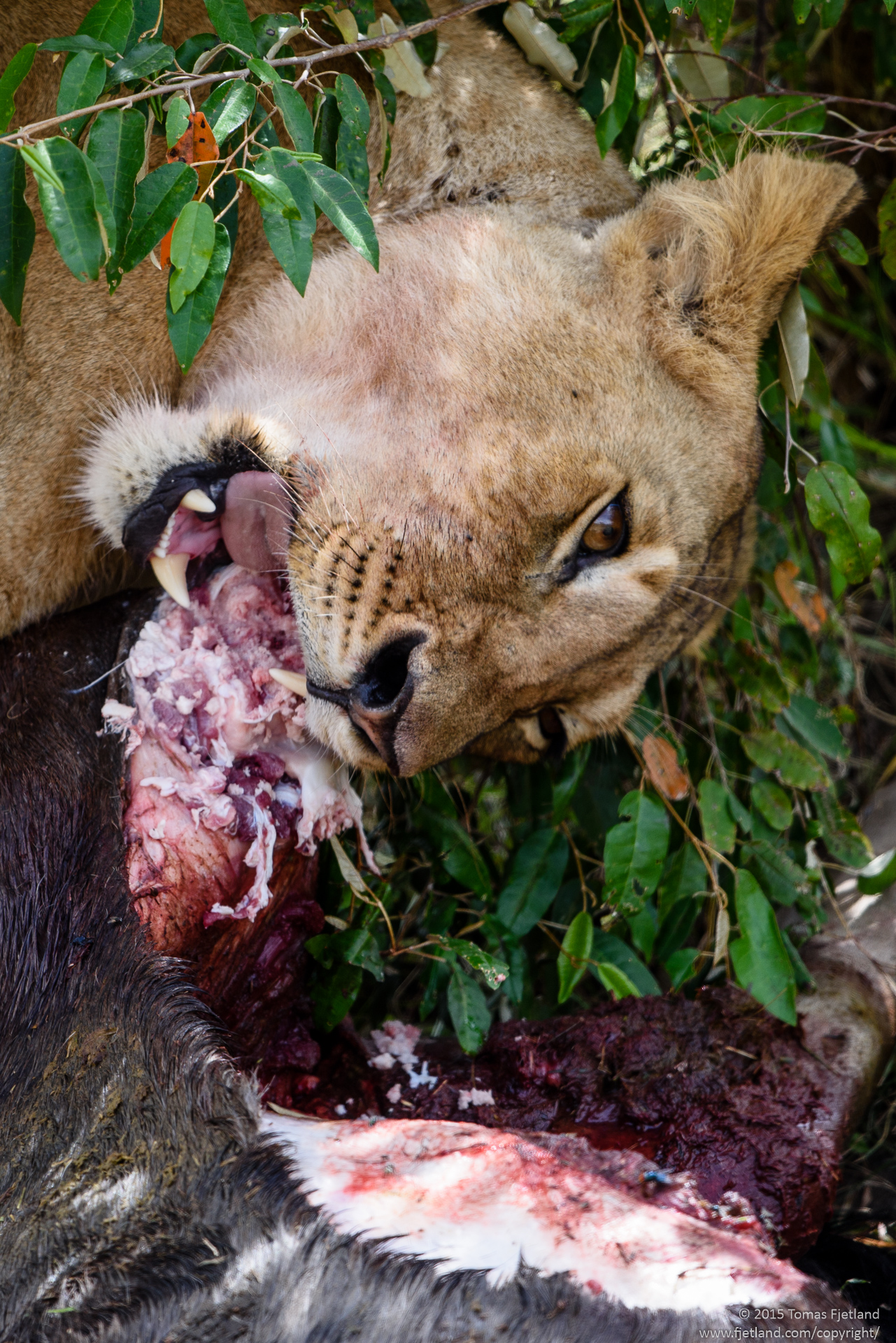
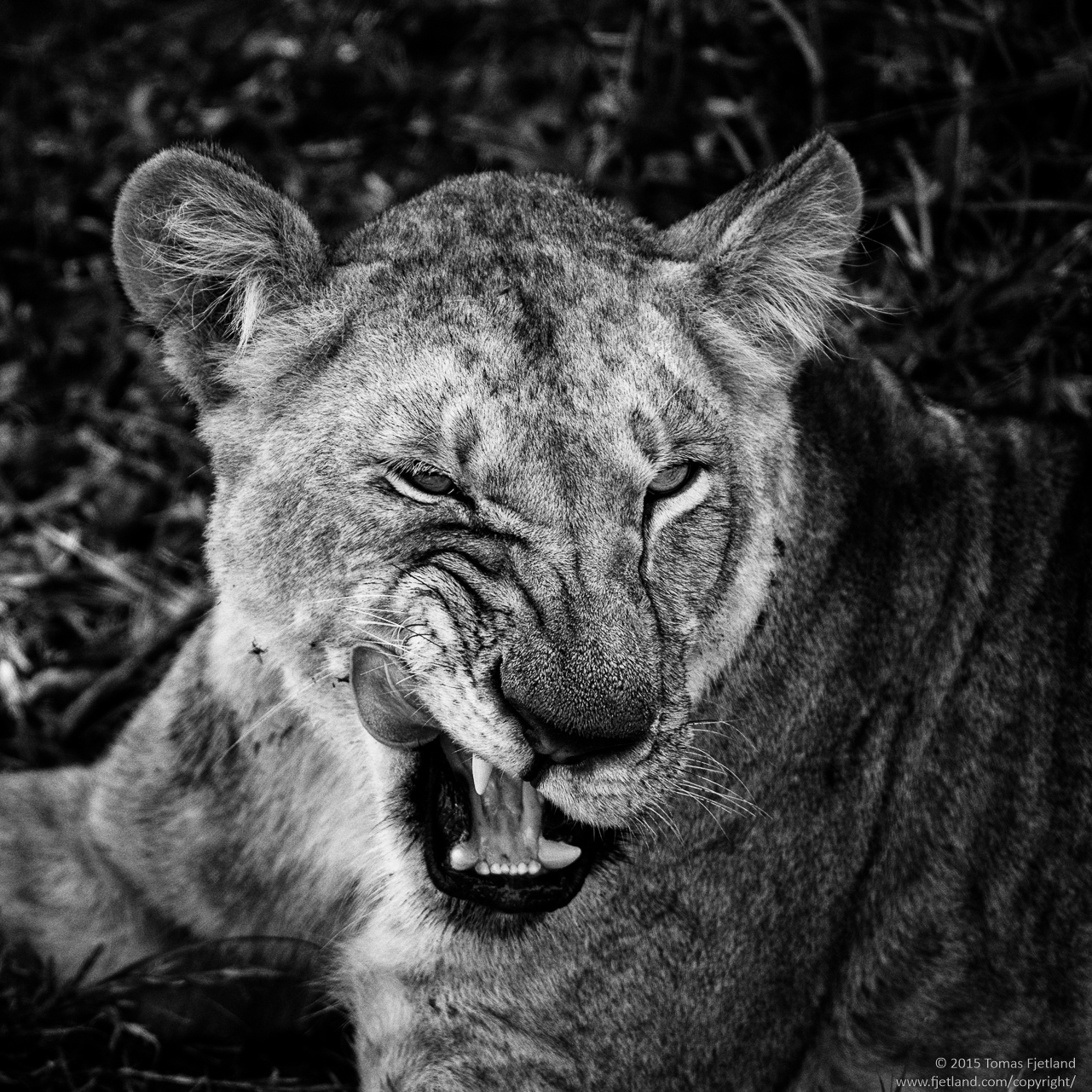
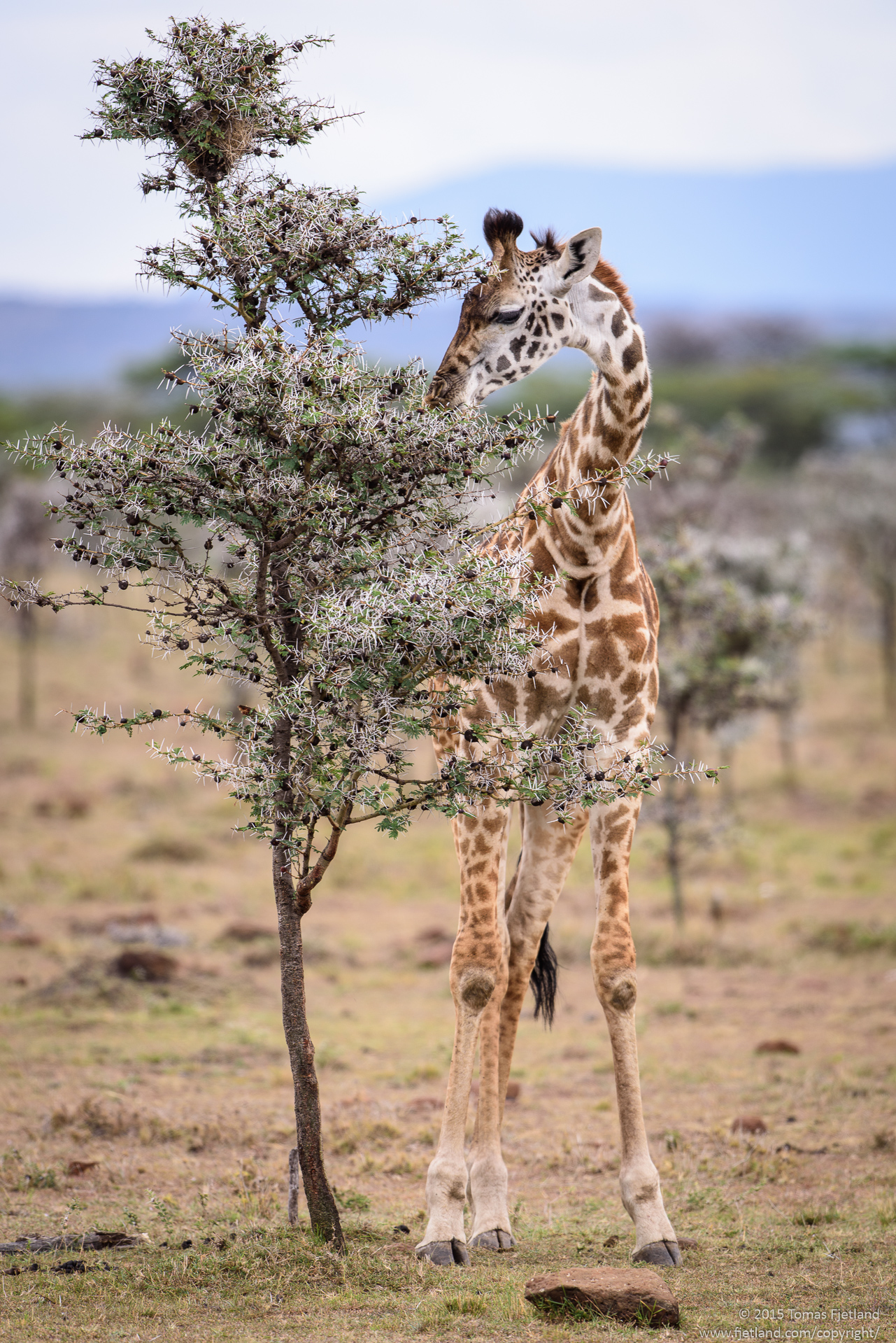
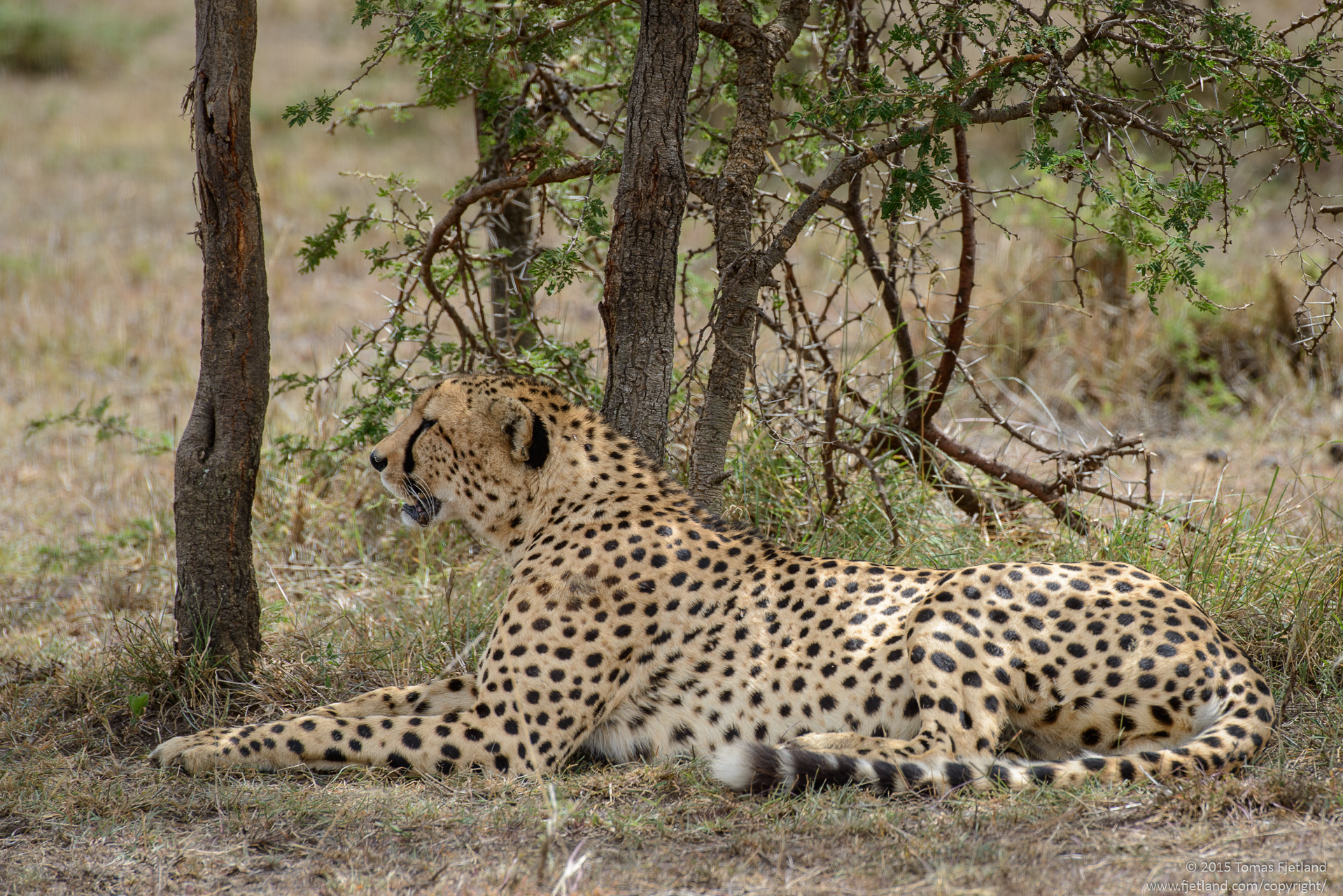
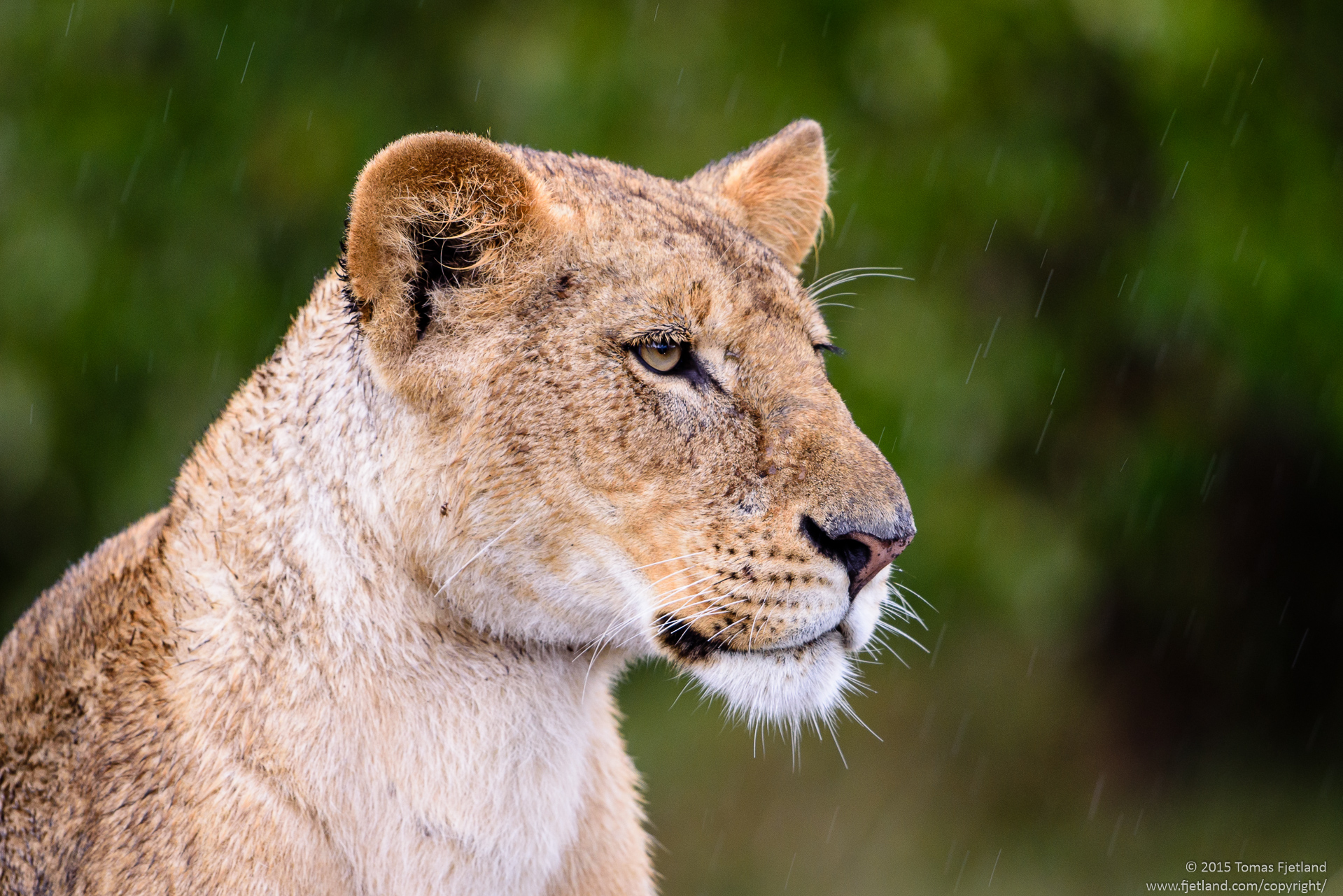
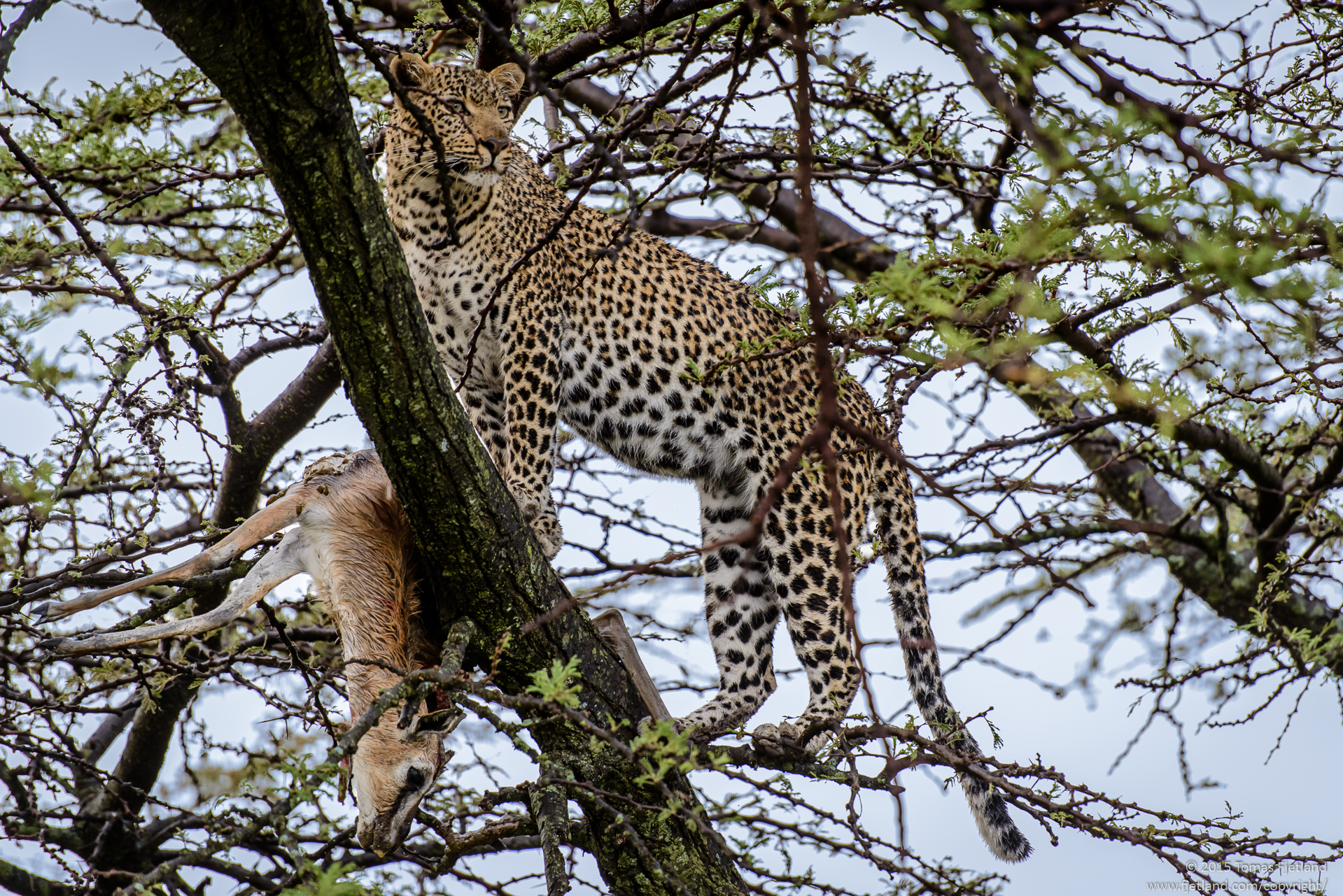
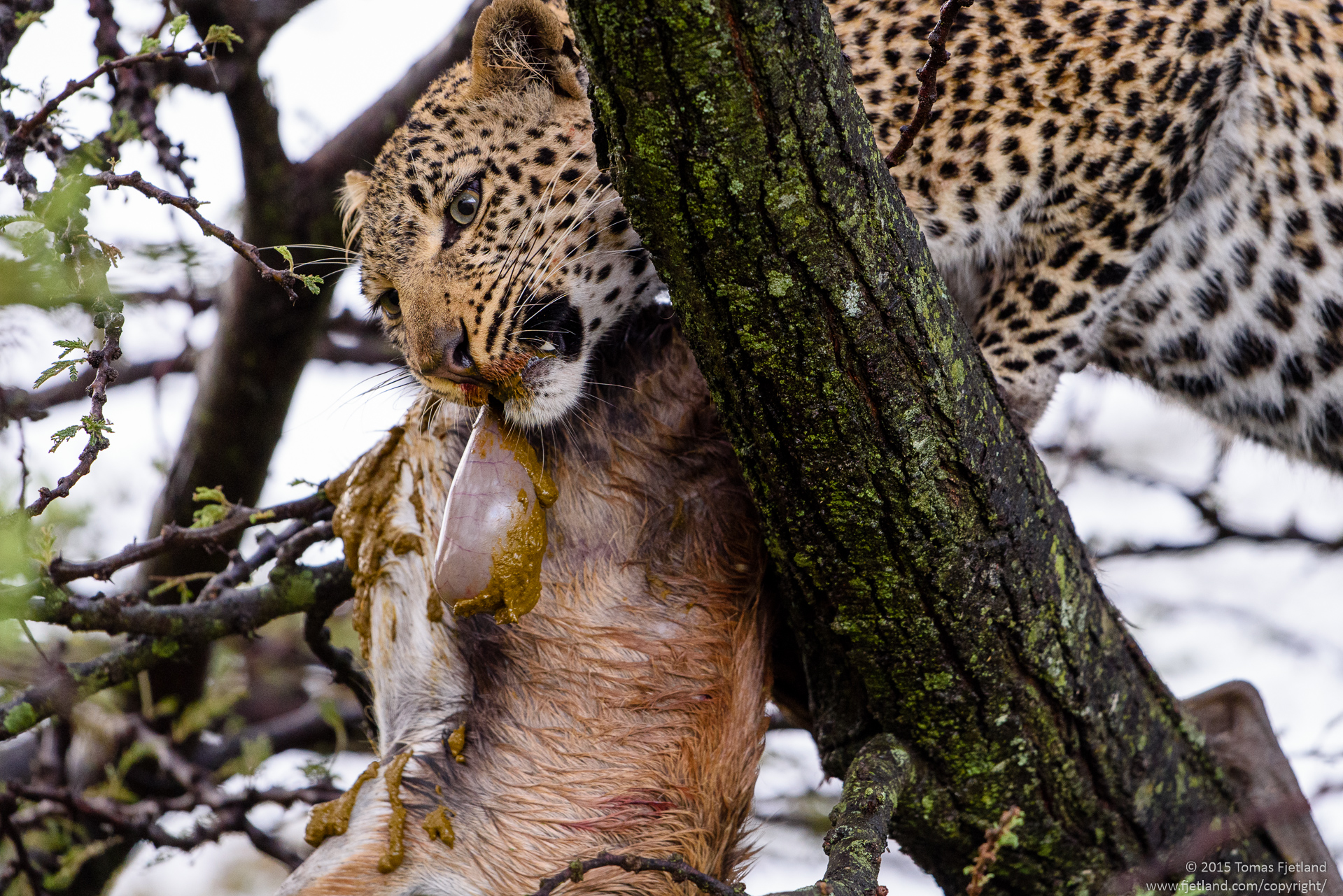

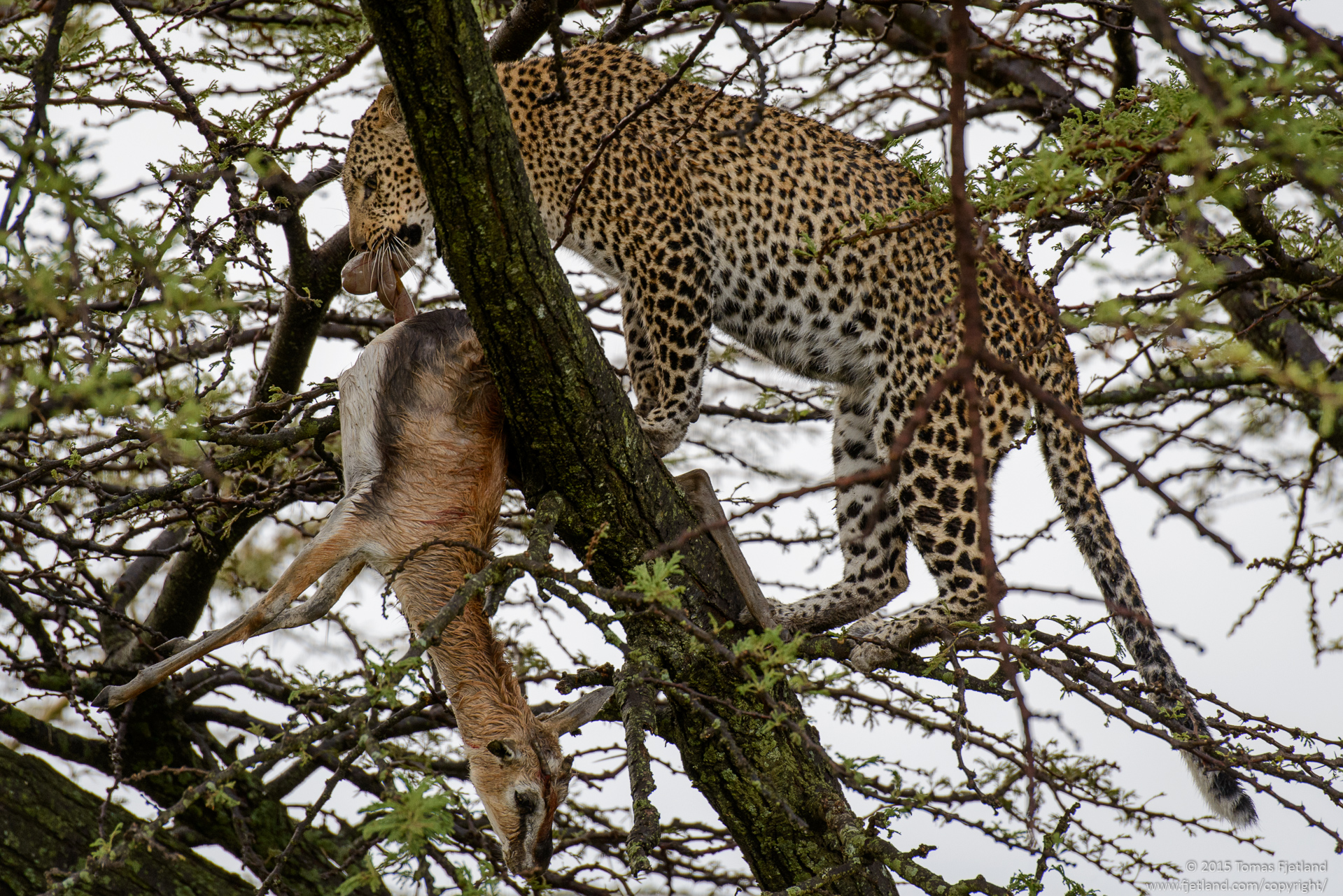
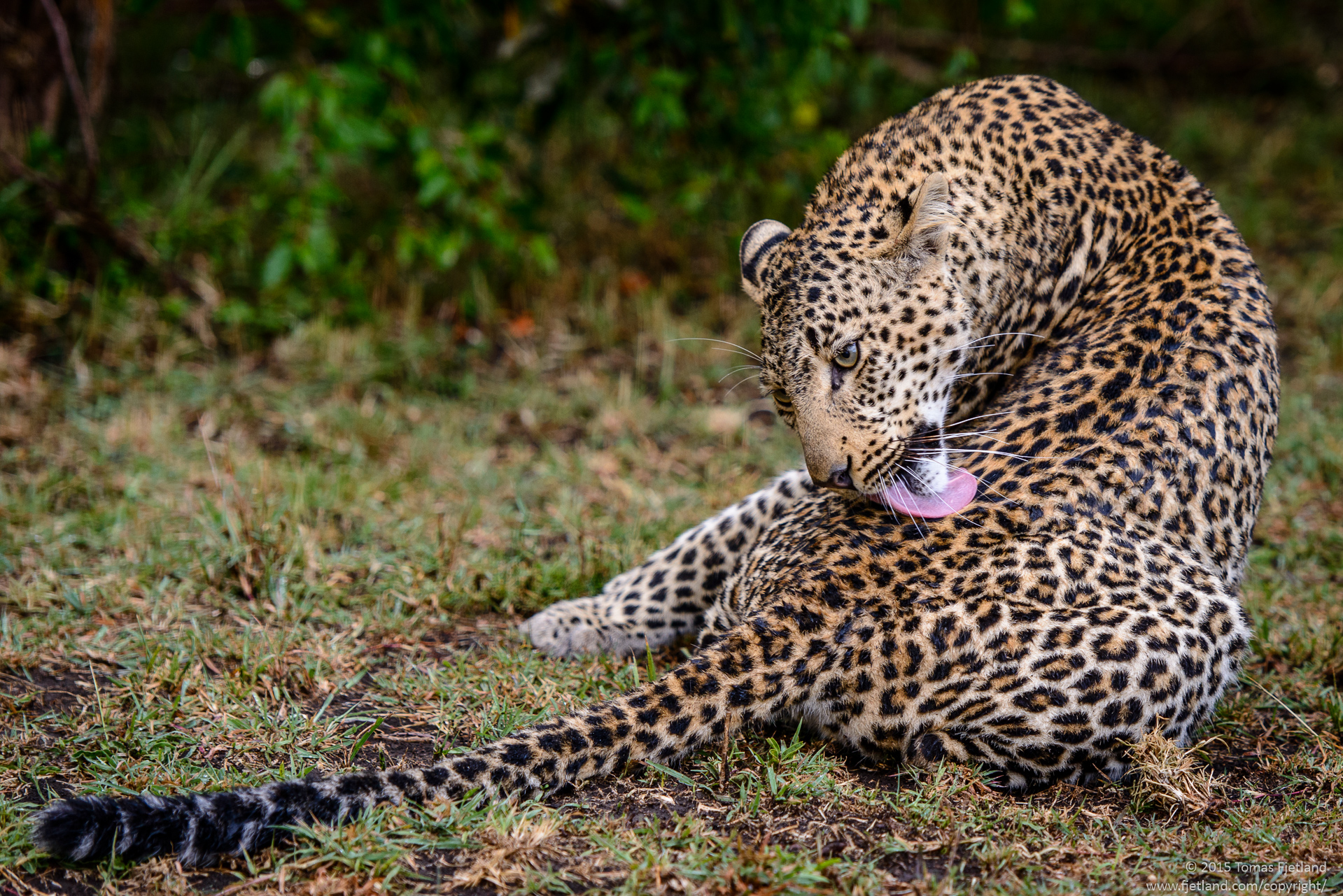
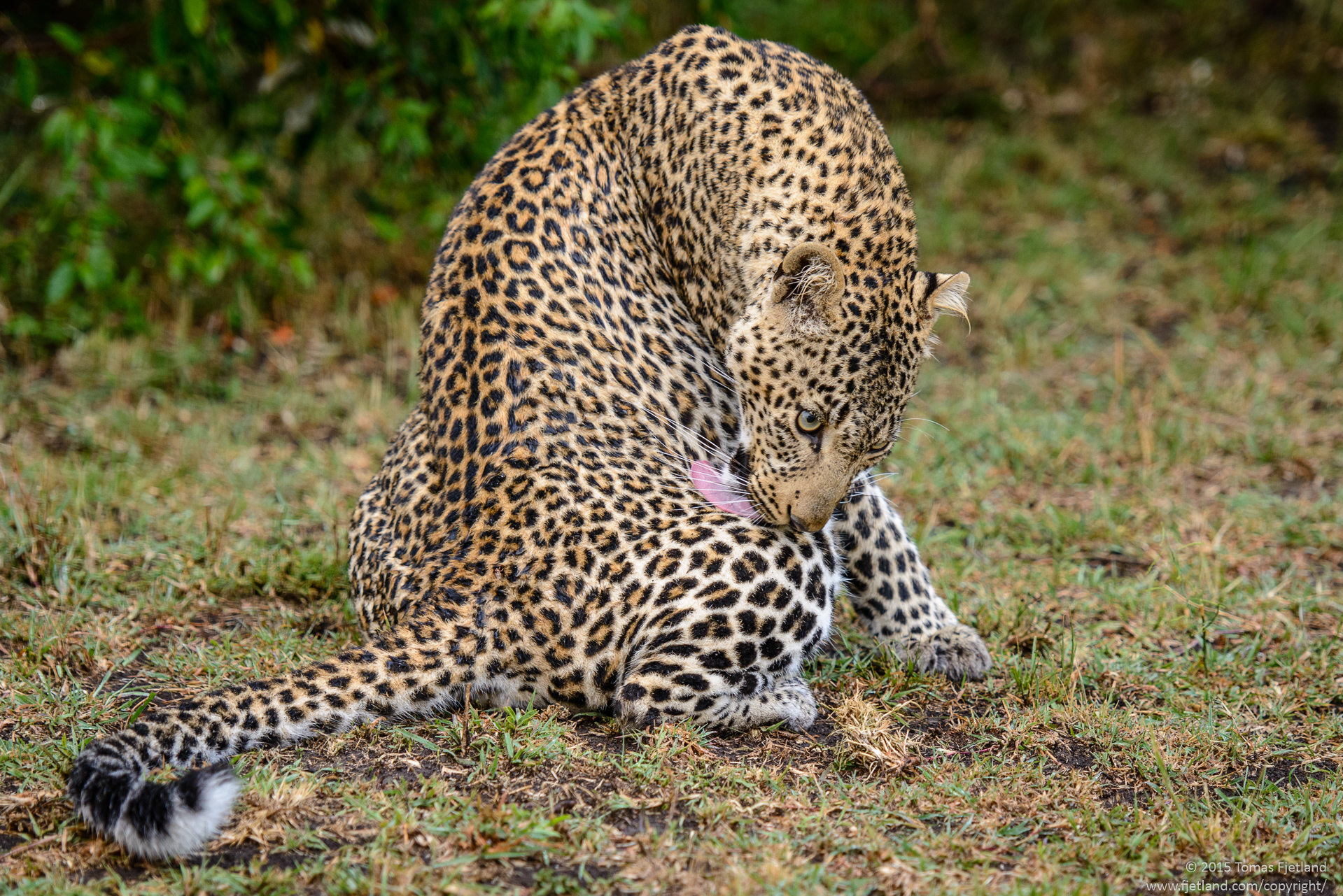
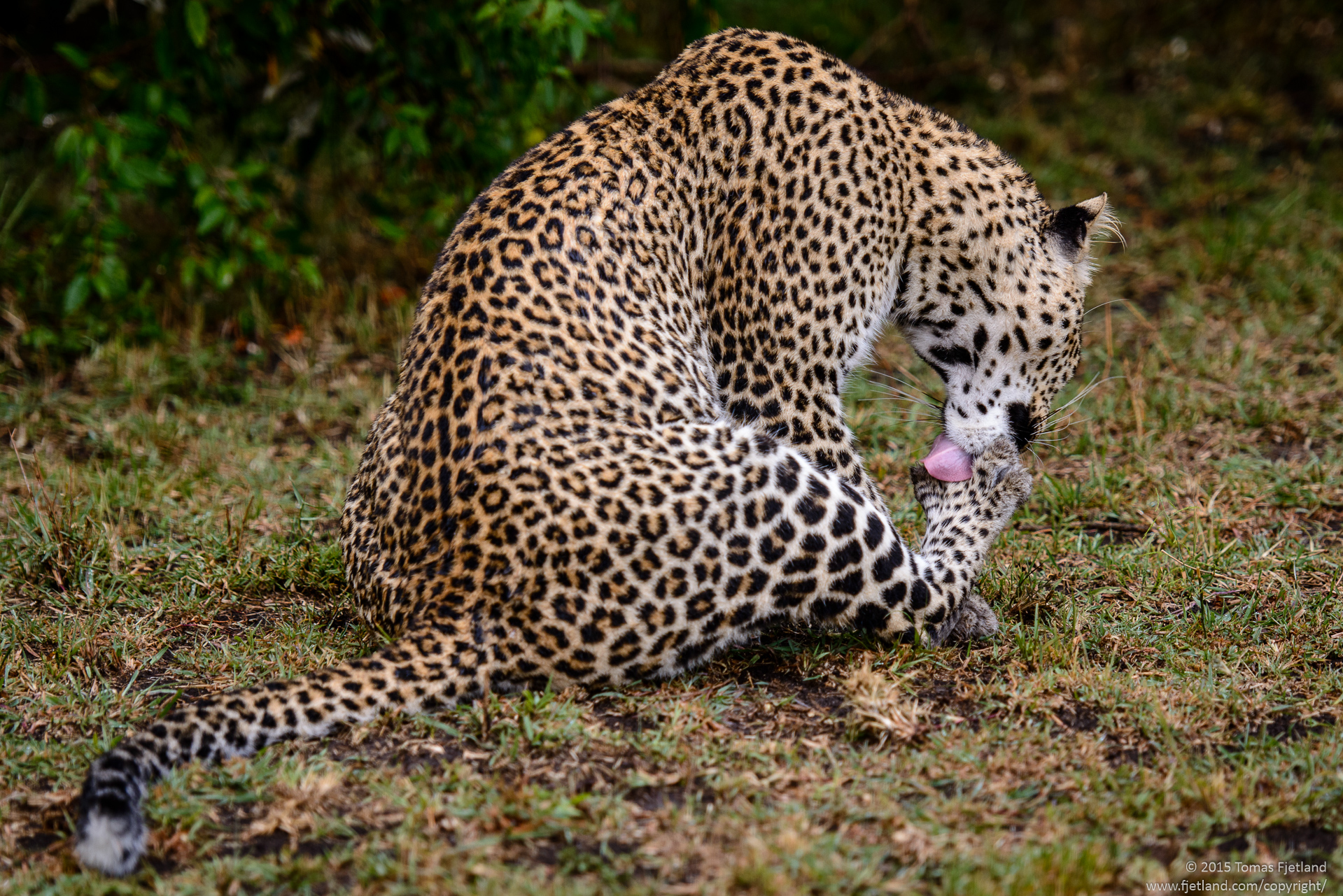

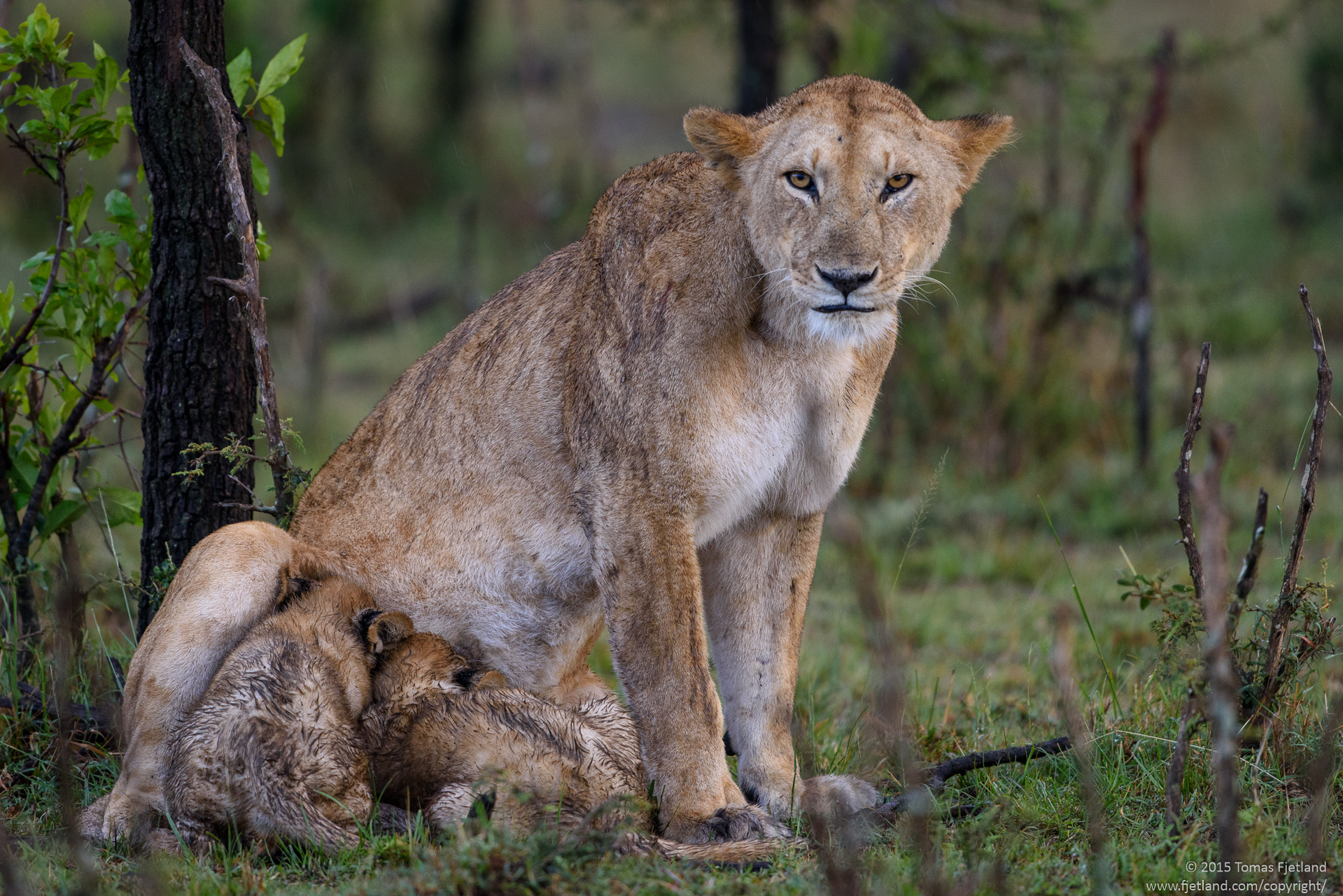
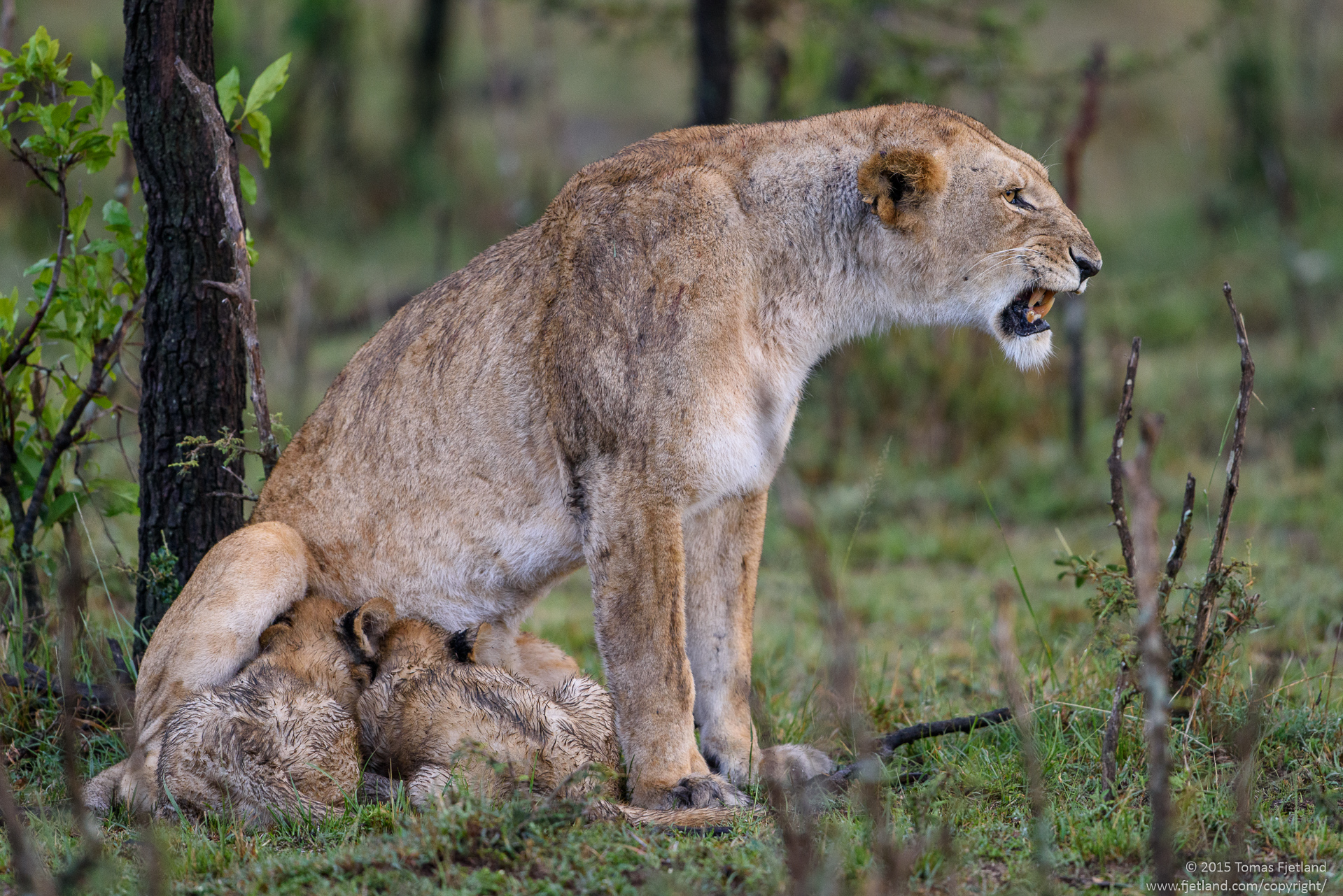
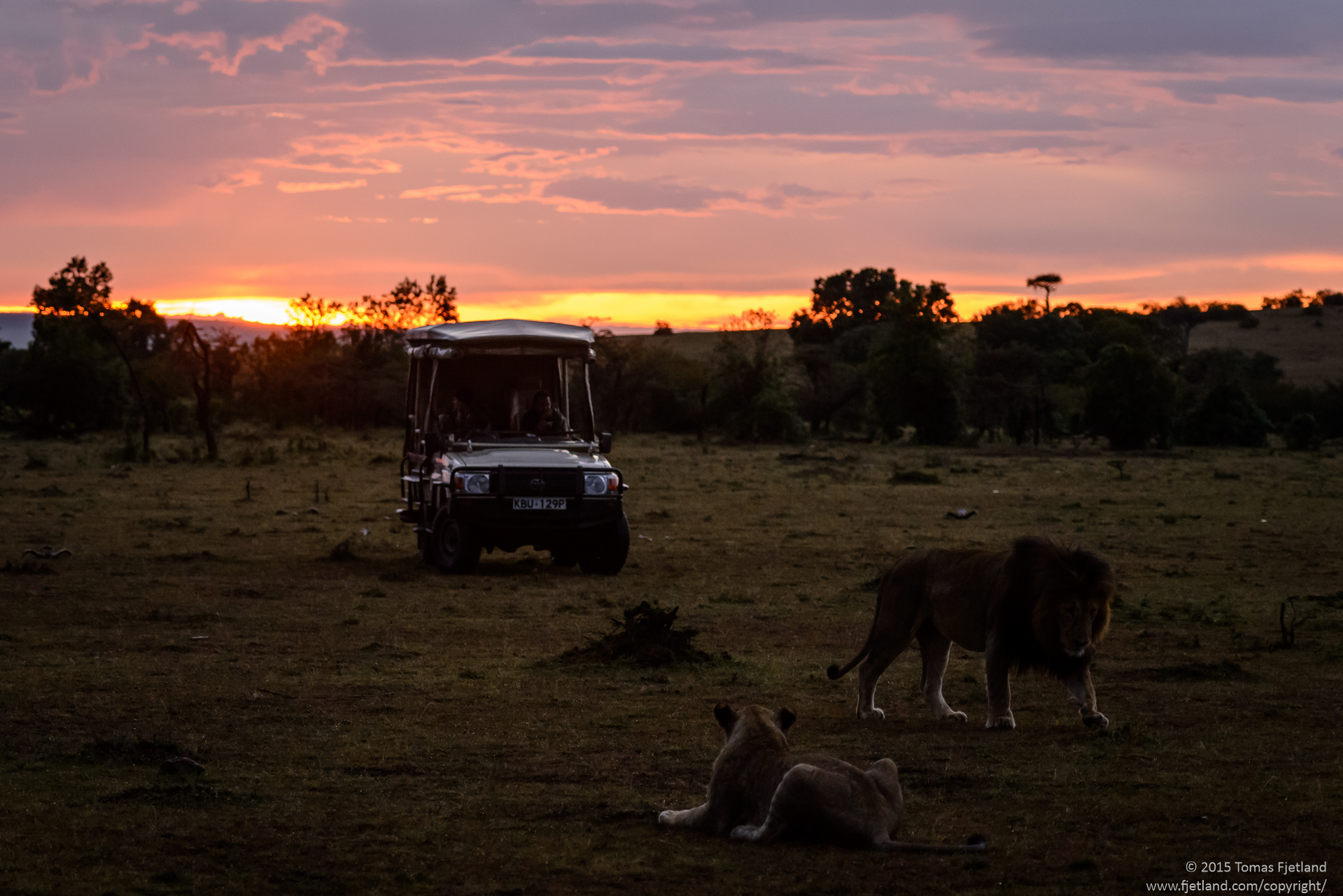
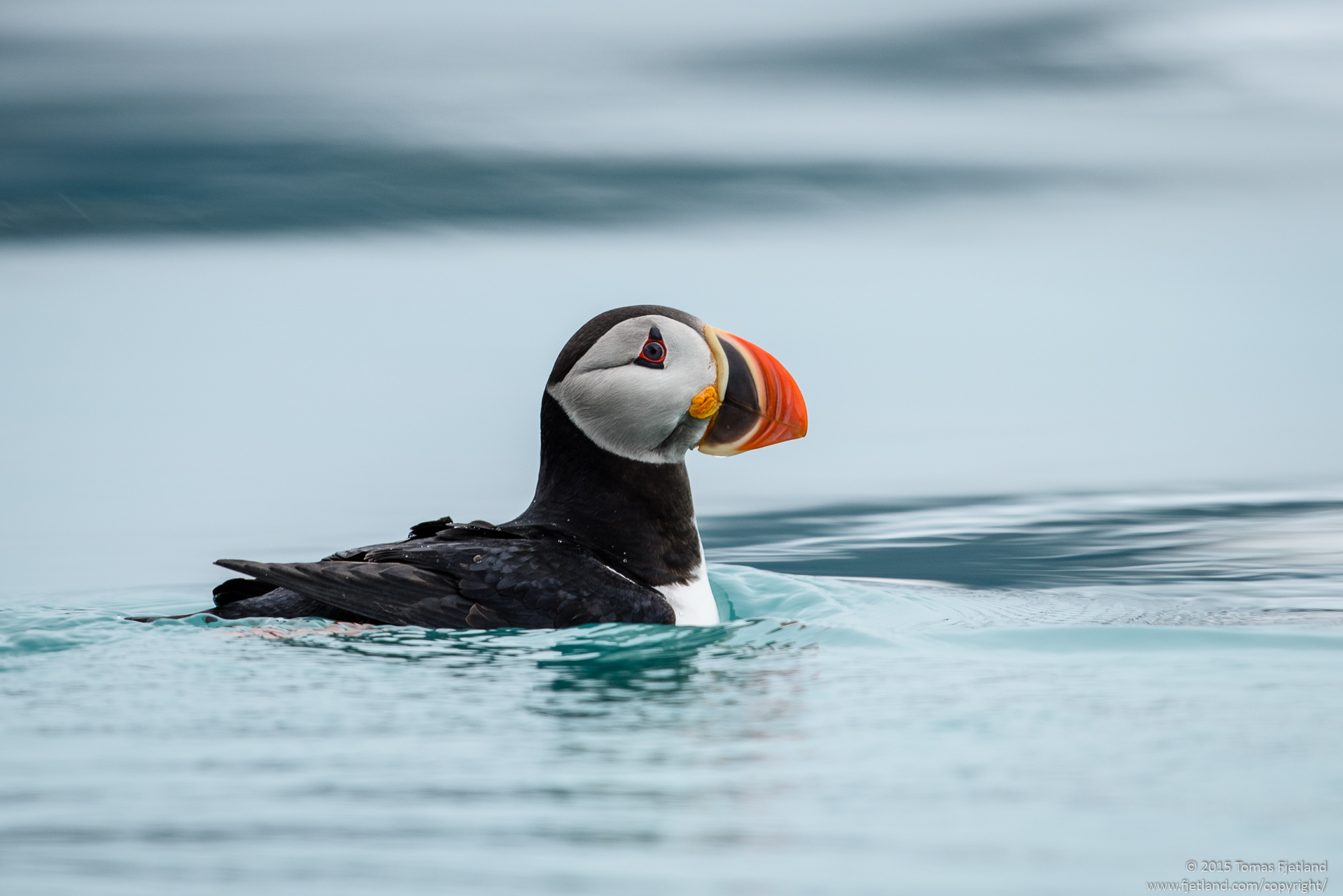
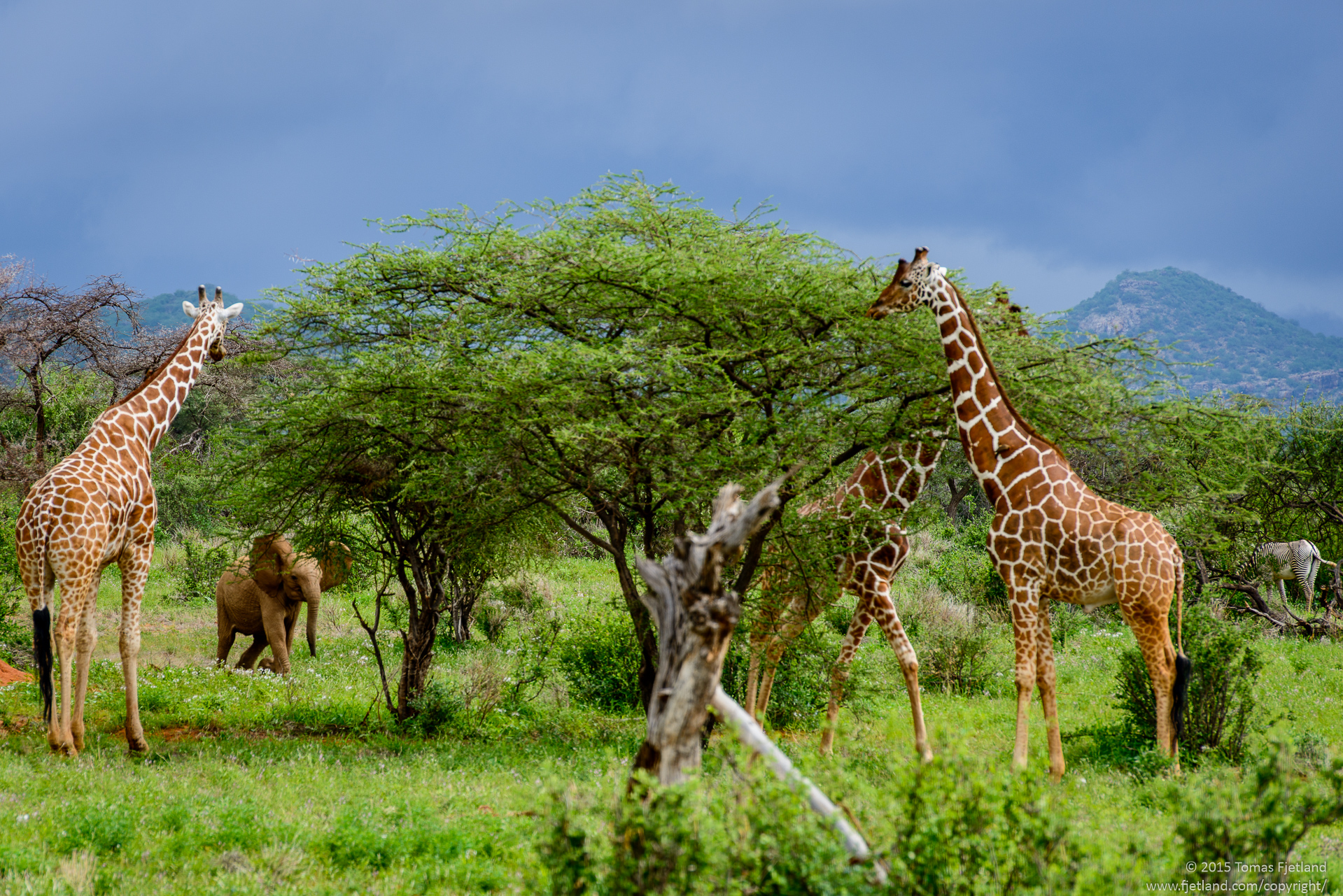
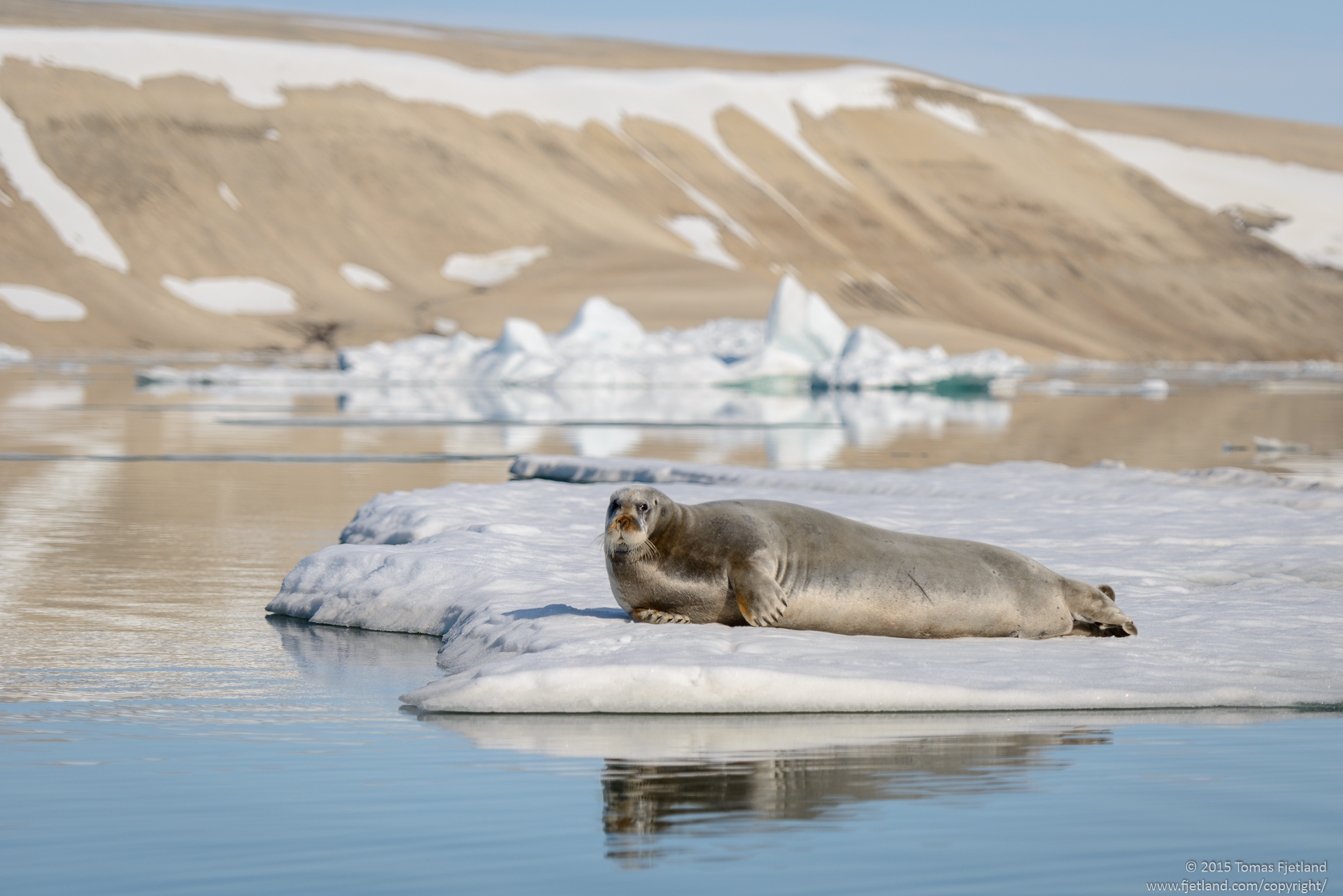
1 Response
[…] November 22, 2014 (Previous day) […]